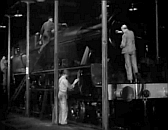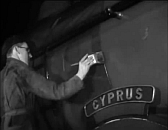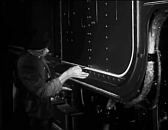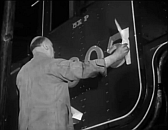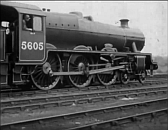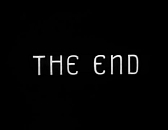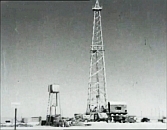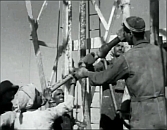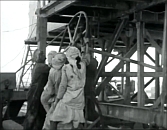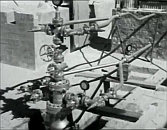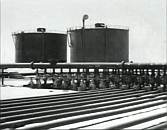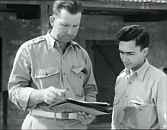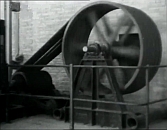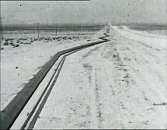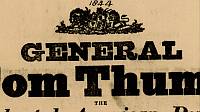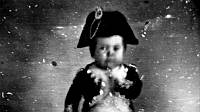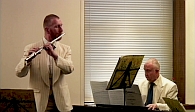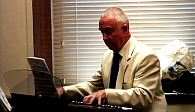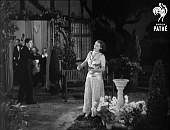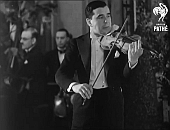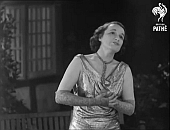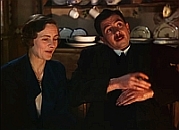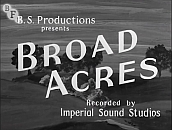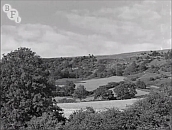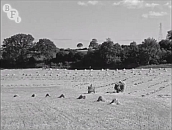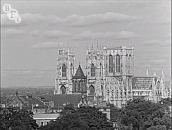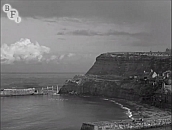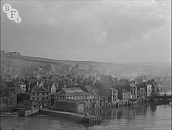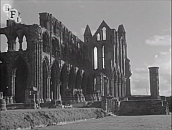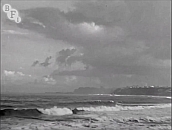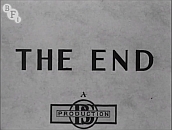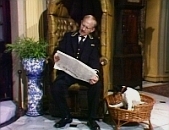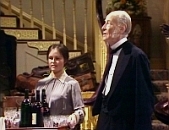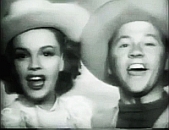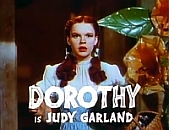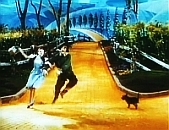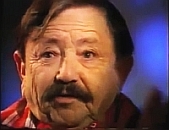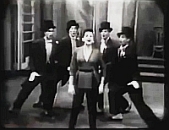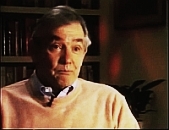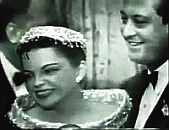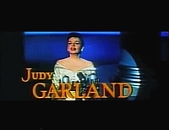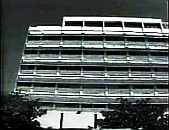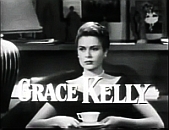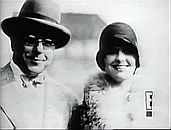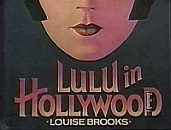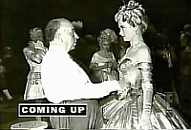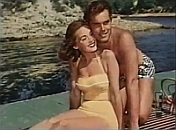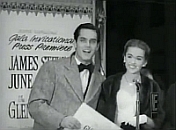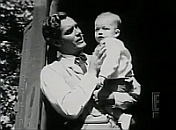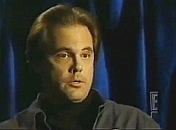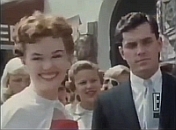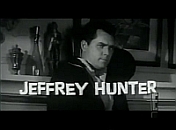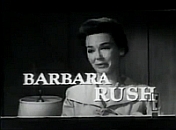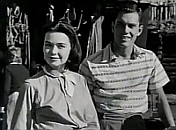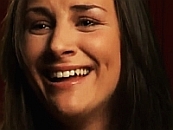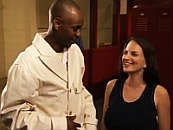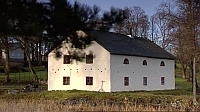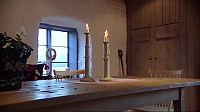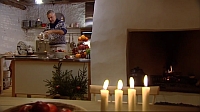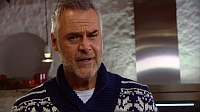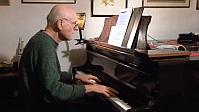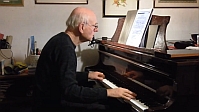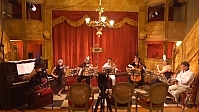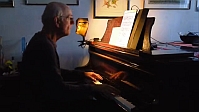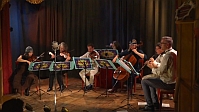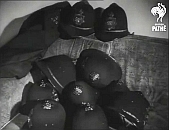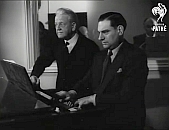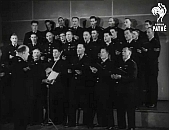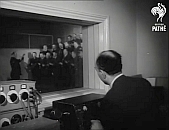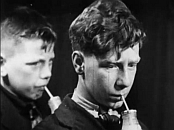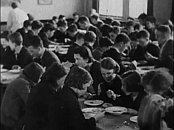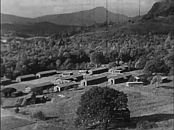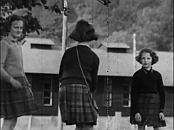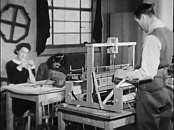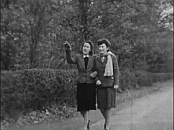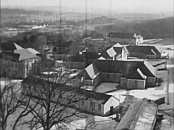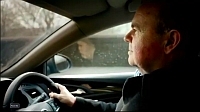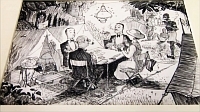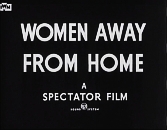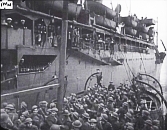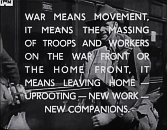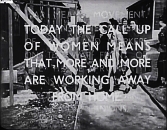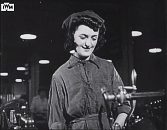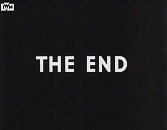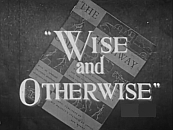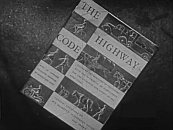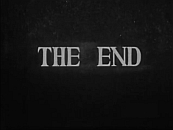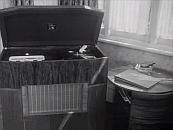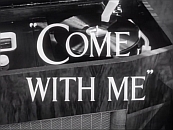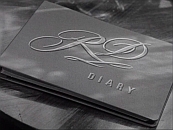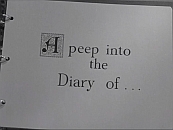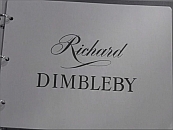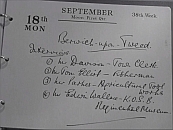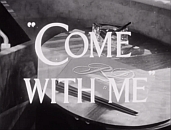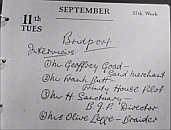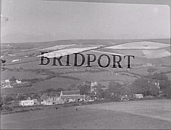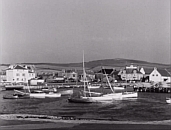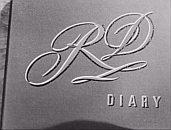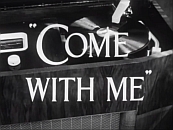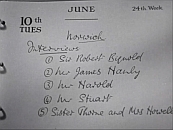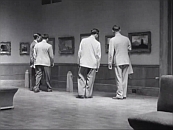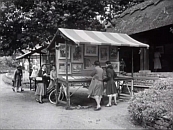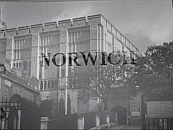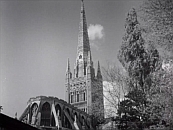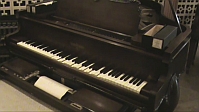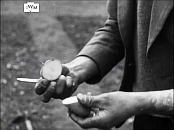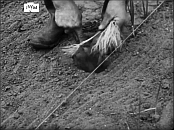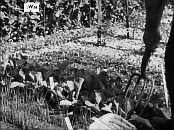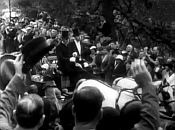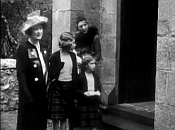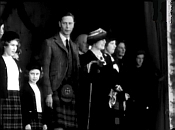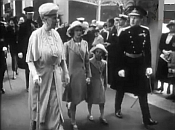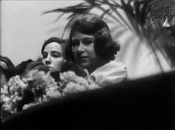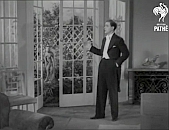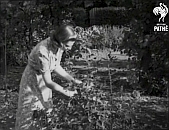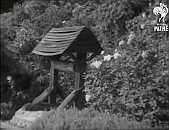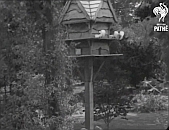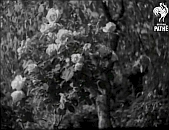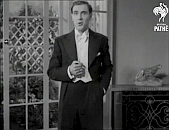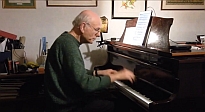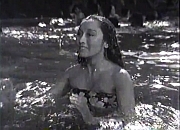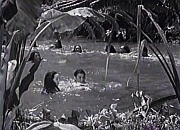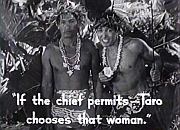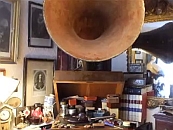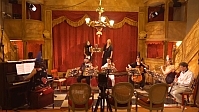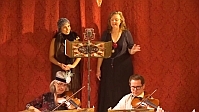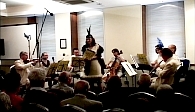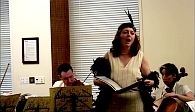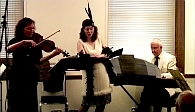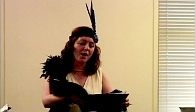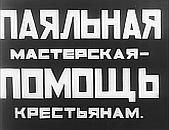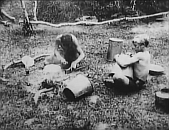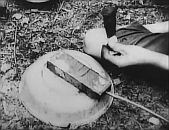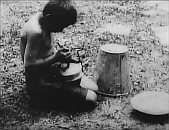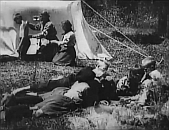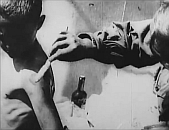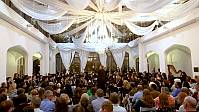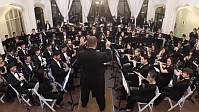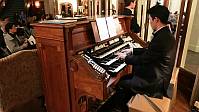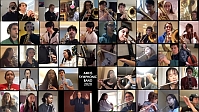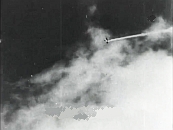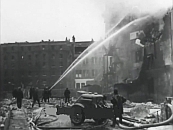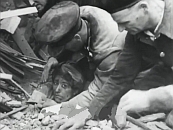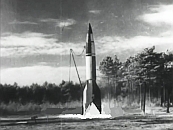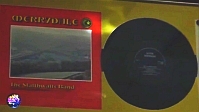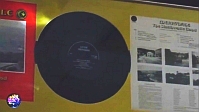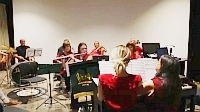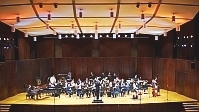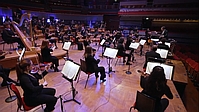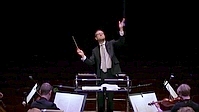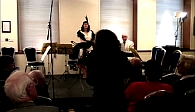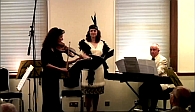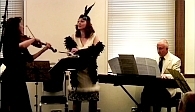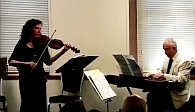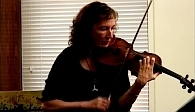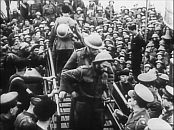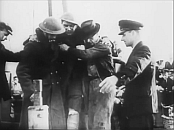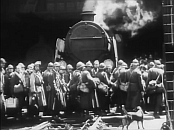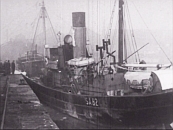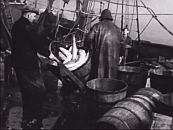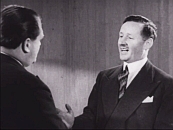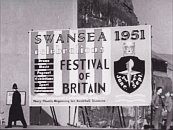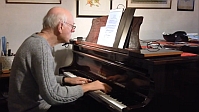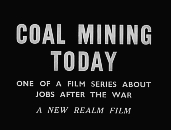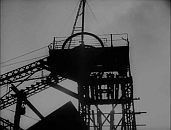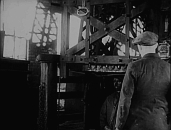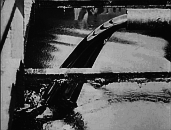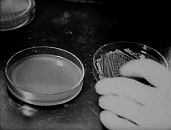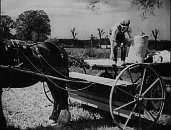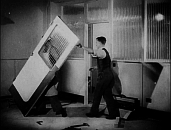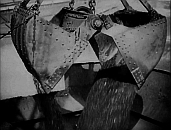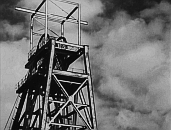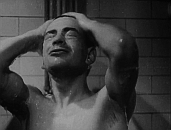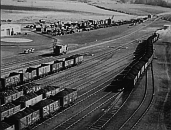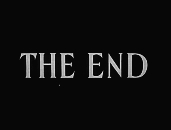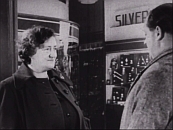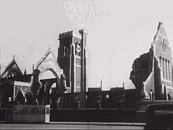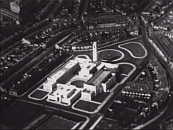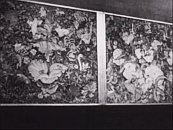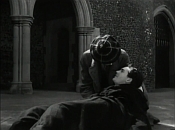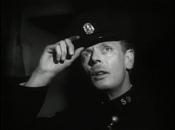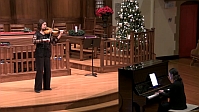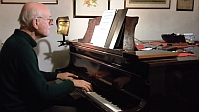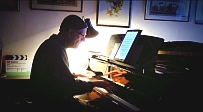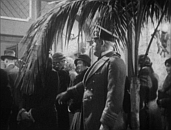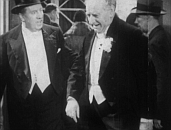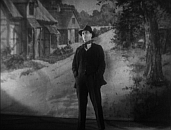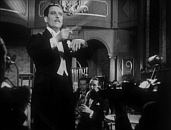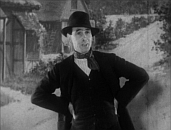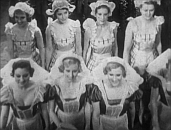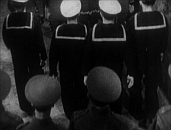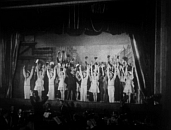Exclusive!
Haydn Wood's
compositions
in cinema, television, and video,
in his lifetime and beyond.
Films, television programmes, and
videos, in which Haydn Wood's music
is performed or listened to by characters or persons, or is used
as background music.
Woody Allen, René Clair, Alfred
Hitchcock,
David Lean, Steven Spielberg, Paul Vecchiali …
Musical works are in alphabetical order.
Musical work year is the year of its first
publication.
Film year is the year when it was in
production, not the year of its first release.
Non
English-language films are listed under their English
title (with the original language title in brackets).
Where a film has never been released with an English
title, it is listed under its original title [with an
English translation in square brackets].
A chronological discrepancy related to a
work by Haydn Wood in a film is mentioned as
a curiosity. Such a mention is not judgmental.
Links to video-sharing websites: your
location may not be authorized.
 A new addition to this web page.
A new addition to this web page.
|
The Bandstand, Hyde Park (1936)
from Frescoes, Suite
in General Repair
London, Midland & Scottish Railway Company (UK,
1938)
documentary
The documentary shows the LMS locomotive
5605 Cyprus from first inspection through general
repair at the
workshop in Crewe, Cheshire.
She is taken to the paint shop ‘for a
beauty treatment which takes five days to complete.’
‘And so, resplendent in her livery [the
locomotive] emerges from the paint shop … to take up
her regular running on the main line.’
The Bandstand, Hyde Park is the
background music to the paint shop activities through
to the end of the film.
The recording by the Regent Concert
Orchestra conducted by William Hodgson is from the
Boosey & Hawkes mood music library (UK, 1937?).
This documentary can be watched on YouTube. The Bandstand, Hyde
Park is at 15:29.
The Bandstand, Hyde Park
in Oil in Kuwait
Kuwait Oil Company (Kuwait, 1946)
documentary
An introduction to Kuwait, its citizens,
towns, and history.
The Bandstand, Hyde Park
accompanies an overview of the beginnings of Kuwait's
oil industry.
The recording by the Regent Concert
Orchestra conducted by William Hodgson is from the
Boosey & Hawkes mood music library (UK, 1937?).
The documentary can be watched on the BP
Video Library online. The
Bandstand, Hyde Park is at 11:43.
The Bandstand, Hyde Park
in British Style Genius: By
Royal Appointment, The Country Look
directed by Lucie Donahue (UK, 2008)
television documentary: episode 4
The documentary explores the British
fashion and style of the country look.
‘Edward Ⅶ's love of flamboyant dress
never left him. In 1897, he commissioned the coat
makers Aquascutum to make this riding cape from a
fabric that he designed himself, the famous Prince of
Wales check.’
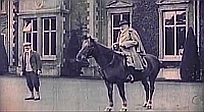 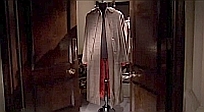
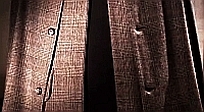
The beginning of The Bandstand, Hyde
Park accompanies the story of the Prince of
Wales’s interest in stylish country garments.
The recording by the New Concert
Orchestra conducted by Serge Krish is from the Boosey
& Hawkes mood music library (London, 1946?).
This documentary can be watched on YouTube. The Bandstand, Hyde
Park is at 18:10.
The Bandstand, Hyde Park
in Fabric of Britain
- Part 1: Knitting's Golden Age
directed by Georgina Leslie (UK, 2013)
television documentary
The documentary explores how knitting in
Great Britain rose from basic craft to the height of
popular fashion in
the 20th century. The
Bandstand, Hyde Park accompanies a scene which
starts in the form of a short silent movie in black
and white.
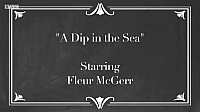
This scene has been introduced (in
colour) by Susan Crawford, author of a book on vintage
knitting. She has recreated a woolen bathing costume
from a 1932 knitting pattern. Her friend, the model
Fleur McGerr, will tell the viewers if, and how much,
the bathing costume will stretch out of shape when
wet.
Fleur dramatically appears, wearing the
black hand-knitted swimming suit with, as in the
original pattern, a
white seagull design emblazoned on the front.
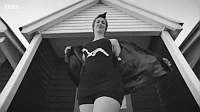 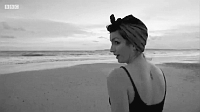
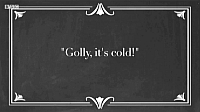 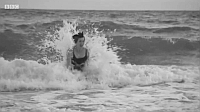
The music arranger for this scene chose
three lively excerpts of The Bandstand, Hyde Park
(the vivid beginning, a martial middle section, and
the grand ending) to build up the drama of the cold
sea the actress is plunging in,
which leads to the two friends' conclusion:
Fleur
– It’s a little bit heavy … not a lot of
support in this area (she gestures to the bosom area
of the bathing costume) but, I think I could have
lived in the 1930s … this certainly wouldn't have
stopped me from going to
the beach.
Susan – This
swimming costume is probably the most glamorous
swimming costume that you can wear, and
I for one think we should bring them back.
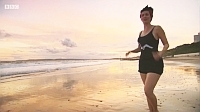 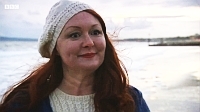 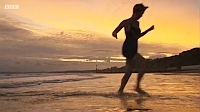
In her wet bathing costume, Fleur runs
back up the beach at sunset. At the last chord of The
Bandstand, Hyde Park, the scene changes to a
shot of a seabird running along the same beach, also
at sunset.
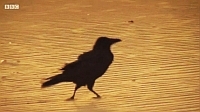
The recording of The Bandstand,
Hyde Park by the New Concert Orchestra conducted
by Serge Krish is from the Boosey & Hawkes mood
music library (London, 1946?).
The Bandstand, Hyde Park
in The Real Tom Thumb,
History's Smallest Superstar
directed by Ian Denyer (UK, 2014)
television documentary
The stage name General Tom Thumb—the
Celebrated American Dwarf—was given to Charles
Stratton by P. T.
Barnum. ‘The name Tom Thumb came from an old
English fairy tale where little Tom fought great
battles mounted on a mouse. Barnum's choice of name
was brilliant branding. The press took the bait.’
The vivid beginning of The
Bandstand, Hyde Park accompanies the story of
Tom Thumb's debut in the world of entertainment.
The recording by the New Concert
Orchestra conducted by Serge Krish is from the
Boosey & Hawkes mood music library (London,
1946?).
This documentary can be watched on YouTube. The Bandstand,
Hyde Park is at 14:59.
The Bandstand, Hyde Park
in ABE [À bon
entendeur : Dans la fondue, rien n'est défendu
!, Fondues traditionnelles et exotiques]
[A Word to the Wise: In a fondue, nothing is
forbidden!, Traditional and Exotic Fondues]
Radio télévision suisse (Switzerland, 2019)
television report
The recipe for fondue, a Swiss
national dish, has always been the subject of many
variations. In a brief account of its history since
Antiquity, the report evokes a stroke of marketing
genius by the Swiss Cheese Trade Union which, in the
midst of the crisis of the 1930s, exploded the
notoriety of the recipe. Even the army, in its own
way, participated in the effort to promote fondue.
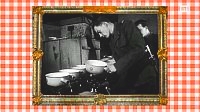
The very beginning of The
Bandstand, Hyde Park is the background music
to these army's efforts.
The recording by the New Concert
Orchestra conducted by Serge Krish is from the
Boosey & Hawkes mood
music library (London, 1946?).
This television report can be watched
on a RTS web page. It begins at
1:28; The Bandstand, Hyde Park is at 8:22.
|
Barcarolle
(1912)
in Flautist Roy Bell
Performs a Piece by Haydn Wood
videoed by Ralph Thompson and Brian Joscelyne (UK,
2009)
videoed concert
The Robert Farnon Society at its meeting
of 5 April 2009 at the Park Inn Hotel, Russell Square,
London, paid
tribute to Haydn Wood to commemorate the
fiftieth anniversary of his death.
In a concert of rarely played
compositions by Haydn Wood, the flautist Roy Bell
performed Barcarolle accompanied by David
Snell on digital piano.
The concert was videoed for the Robert
Farnon Society and excerpts were edited for the Haydn
Wood Music Library and Archive.
This performance of Barcarolle
can be watched on the Haydn Wood Music channel on
YouTube.
|
A Bell for Adano, An
Impression (1944)
in David Snell Performs
Piano Pieces by Haydn Wood
videoed by Ralph Thompson and Brian Joscelyne (UK,
2009)
videoed concert
The Robert Farnon Society at its meeting
of 5 April 2009 at the Park Inn Hotel, Russell Square,
London, paid
tribute to Haydn Wood to commemorate the
fiftieth anniversary of his death.
In a concert of rarely played
compositions by Haydn Wood, David Snell performed on
digital piano two of Haydn Wood's piano pieces: A
Bell for Adano, An Impression and Charlie
Chaplin, Humoreske.
The concert was videoed for the Robert
Farnon Society and excerpts were edited for the Haydn
Wood Music Library and Archive.
David Snell's performance can be watched
on the Haydn Wood Music channel on
YouTube. A Bell for Adano is at 0:39, and
Charlie
Chaplin is at 4:12.
|
Bird of Love Divine
(1912)
in Mavis Bennett the Famous
B.B.C. Soprano
Accompanied by Leonardo Kemp and His Piccadilly
Hotel Orchestra
Pathetone Weekly (UK, 1932)
newsreel
The soprano Mavis Bennett sings Bird
of Love Divine, accompanied by Leonardo Kemp and
His Piccadilly Hotel Orchestra.
This newsreel can be watched on the British
Pathé channel on YouTube.
Bird of Love Divine
in This Happy Breed
directed by David Lean (UK, 1944)
London, 1925: the Gibbons are
celebrating Christmas. They get together with friends
in the living room. Bird
of Love Divine sheet music is on the piano rack.
Aunt Sylvia insists on singing a couple of songs and
accompanying herself on the piano.
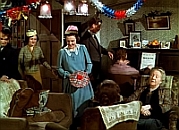
Mum and dad
spend a moment together in the dimly lit kitchen.
Through the partition they can still hear Sylvia
singing Bird of Love Divine with her shrill
voice.
Roses
of Picardy accompanies another moment in This
Happy Breed.
This Happy Breed can be watched
on YouTube. The sheet music can be
noticed from 17:58 and Sylvia sings Bird of Love
Divine at 31:01.
Bird of Love Divine
in Waterloo Road
directed by Sidney Gilliat (UK, 1944)
During the London Blitz and while her
husband is mobilized, Tillie becomes infatuated with
Ted, a tough guy.
Instead of taking her to a shelter when
an alert sounds, he takes her to his place and seduces
her. The radio suddenly announces: ‘Bird
of Love Divine by Haydn Wood.’
Upon hearing the charming melody, Tillie runs a gamut
of emotions; first laughing nervously, then gathering
herself together, then shedding tears over her
husband. Ted complains about the money he has spent to
please her. She answers back that she can't believe
how cheap he can be—and he slaps her.
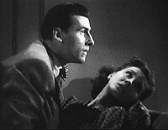
This recording by a full orchestra of
Bird of Love Divine was probably recorded
especially for the film.
Waterloo Road can be watched on VK
Video. Bird of Love Divine is
at 1:01:50.
|
Bird of Love Divine,
Intermezzo (1932)
in Broad Acres
devised by Paul Barralet (UK, 1945)
travelogue
‘Yorkshire. A land of lonely moors and
rolling hills where men and nature have combined to
make full use of the treasures of the earth. This is
the country of broad acres where the fields are large
and unrestricted by ages. For generations the farmers
of Yorkshire have tilled the rich soil.’
The powerful introduction of Bird of
Love Divine, Intermezzo with the quiet main
theme which follows, opens the film and contributes to
the presentation of Yorkshire and her farmers.
A sequence about the city of York ends
with a shot of the minster—‘a mighty edifice’—at a
distance.
‘Leaving York, we make our way across
country, and onto the rugged coast where the rollers
lash the rocks along the shore.’
‘Further north, we reach Whitby, a
peaceful little fishing town … Higher up on the cliff
stand the remains of the
abbey, a fine example of Gothic
architecture.’
‘And at this point, our tour ends
leaving us with pleasant memories of historic
Yorkshire and her broad acres.’
Resuming with the shot of York Minster,
Bird of Love Divine Intermezzo is the
continuous background music to
the film and its last two chords accompany
the closing title.
The recording by the New Concert
Orchestra conducted by Jay Wilbur is from the Boosey
& Hawkes mood music library (UK, 1945?).
The travelogue can be watched on the British
Film Institute channel on YouTube. Bird of
Love Divine, Intermezzo is at 0:00 and
14:05.
Bird of love Divine,
Intermezzo
in [Haydn Wood]
New Pictorial (UK, 1946)
newsreel
In this short film, Haydn Wood is seen
taking a walk in a garden, looking down on water
lilies from a bow bridge, resting on a bench in front
of a rose bed, and staring up at trees.
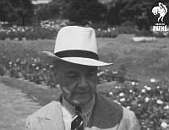 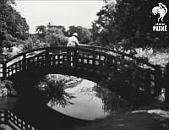
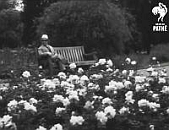
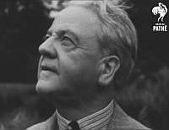
‘He gets the right
mood for composition, just where you would expect: in
a garden.’ The commentary
is spoken over Bird of Love Divine, Intermezzo
for full orchestra.
The recording by the New Concert
Orchestra conducted by Jay Wilbur is from the Boosey
& Hawkes mood music library (UK, 1945?).
The newsreel can be watched on the British Pathé channel on
YouTube.
More on this newsreel here on this page.
|
A Bouquet of Happy Memories (1941?)
in La Nuit des talents
[Talent Awards Night]
Conseil général de la Somme (France, 2006)
videoed event
On 25 January 2006 at Mégacité, in
Amiens, the Somme General Council rewarded nine
talents from the Somme department, well known in their
professional or association circles for their craft or
industrial, scientific or artistic activities. The
event was filmed and stored on a 2-DVD set distributed
by the General Council.
During the evening, the Musicaa Chamber
Chorus conducted by the opera singer Jean-Philippe
Courtis, and accompanied by Jean-Pierre Baudon on
piano, gave A Bouquet of Happy Memories, a
medley of six hit songs composed by Haydn Wood and
arranged by himself for four soloists and chorus. At
first, they sang The Sea Road, A Brown
Bird Singing, It Is Only a Tiny Garden,
Bird of Love Divine, and Love's Garden of
Roses.
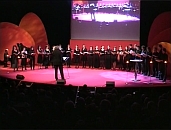 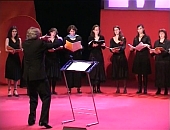 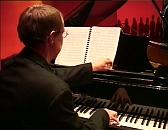
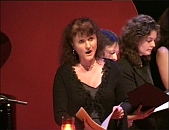
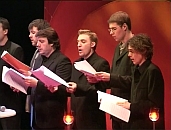
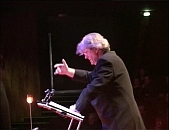
At the close of the evening,
Jean-Philippe Courtis sang the baritone solo and
conducted the Musicaa Chamber Chorus in Roses of
Picardy, the final song in the Bouquet of
Happy Memories, again accompanied by Jean-Pierre
Baudon on piano.
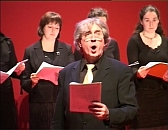 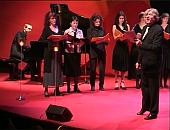
During the evening, Roses of Picardy was
performed in three other different versions.
|
A
Brown Bird Singing
(1922)
in The
Good Old Days
devised and produced by Barney Colehan (UK, 1977)
television variety show series
In this BBC
reconstruction of an old-style show pre-recorded at
the City Varieties Theatre in Leeds and broadcast on 3
February 1977, the soprano Valerie Masterson sings A
Brown Bird Singing. She is accompanied by the
pit orchestra conducted by Bernard Herrmann.
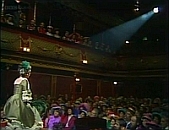 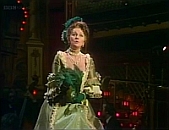 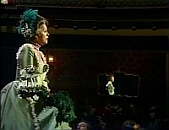
The show can
be watched on YouTube. A Brown Bird
Singing is at 23:31.
A
Brown Bird Singing
in The
Duchess of Duke Street: Poor Little Rich Girl
directed by Cyril Coke (UK, 1977)
television series: season 2, episode 15
London in
the mid-1920s: Louisa Trotter is the owner of a small upper-class
hotel on Duke Street. Her daughter Lottie longs for
a career as a singer, despite her objections.
From the
entrance hall, some of Louisa's staff stop to listen
to Lottie singing upstairs at her first singing
lesson.
Her voice teacher accompanies her on piano in A Brown
Bird Singing.
A
sheet music of A Brown Bird Singing is on the piano rack.
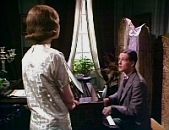
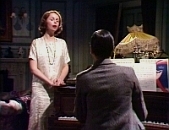
Both
actress and actor (Lalla Ward and Jeremy Nicholas)
actually performed
A Brown Bird Singing
in the course of the sequence shooting.
A
Brown Bird Singing
in
Trade Secrets: Housekeepers
directed by Iain B. MacDonald (UK, 1995)
television documentary: series 1, episode 5
Housekeepers
share some of their tips on cleaning chores, such as
cleaning the insides of kettles or making cutlery
shine like new. After demonstrating their choices of
seeming magic, the documentary shows them catching
their breath over a cup of tea in their respective
kitchens.
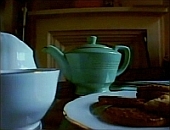
 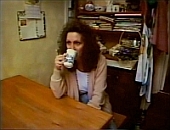 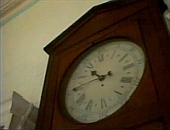
The sequence
is accompanied by the relaxing tempo of A Brown
Bird Singing as if the housekeepers were
listening to the radio. Even a clock is ticking in
time to the music.
The
recording
of A Brown Bird Singing
by Eric Jupp and the Melodi Strings is
from the Chappell recorded music library
(UK, 1959?).
This
documentary can be watched on YouTube. A Brown Bird
Singing is at 7:47.
A
Brown Bird Singing
in Mysteries
& Scandals: [Judy Garland]
E! Entertainment Television (USA, 1998)
television documentary
A Brown
Bird Singing is the background music to three
moments in this biography of the Hollywood star Judy
Garland, which focuses on her changing fortunes.
She made ten
films with Mickey Rooney showing her acting talents
as well as her fantastic singing voice. In 1938, at age 16, she was a logical choice for the role of Dorothy in
the musical The Wizard of Oz; Jerry Maren,
one of the Singer Midgets in the film, happily
remembers their first day of filming with Judy.
In 1951,
she returned to the concert stage; John Carlyle, a
longtime friend, is on the verge of tears when he
recalls how she then sang ‘Somewhere Over the
Rainbow.’ In 1952,
she married the producer Sid Luft who
‘kept her away from
alcohol and drugs,’ says Alan Livingston, former president
of Capitol Records.
In 1955, all Hollywood believed
Judy Garland would won the Academy Award for
Best Actress for her leading role in A Star
Is Born. On Oscar night, Judy was in
hospital where she had just given birth to her
third child, but the winner was Grace Kelly in The
Country Girl.
The recording
of A Brown Bird Singing by Eric
Jupp and the Melodi Strings is from the Chappell
recorded music library (UK, 1959?).
This documentary can be watched on DAILYMOTION. A Brown
Bird Singing is at 4:02, 12:03, and 13:47.
A
Brown Bird Singing
in
Mysteries & Scandals: [Louise
Brooks]
E! Entertainment Television (USA, 1998)
television documentary
This
documentary focuses on a young rebel, the
Hollywood actress Louise Brooks.
In 1928 at
age 22, she decided to quit Paramount Pictures and
went to Berlin at the invitation of Georg Wilhelm
Pabst to play the leading role of Lulu in his new
film Pandora's Box. Pabst was the first
director ever to see all the possibilities that
she had. Lulu ‘mesmerized the son of
a publisher and the publisher himself, and a
countess, in one of the first really frankly
lesbian characters on screen. And she finally
meets this guy on a street of London; she is
pretending at this point to be a prostitute, and
he does not have any money but she takes him
upstairs anyway … that's the mistake she
makes because it turns out to be Jack the
Ripper.’
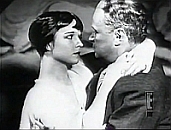
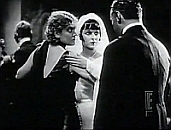
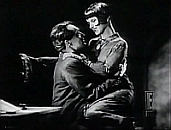
After completing another film in
Germany [the documentary does not specify it was
Diary of a Lost Girl directed by Pabst],
Louise decided to return to the USA in 1929
despite Pabst's objections.
‘Once
again Hollywood brought out the rebel in
Louise Brooks.’ She turned down
roles and when
Paramount hired another actress to voice her
role in her silent film
The Canary Murder Case, she was
finished.
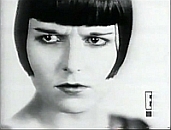 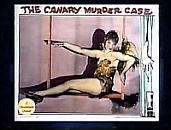
In the
1950s, 60s, and 70s she wrote ‘essays
which appeared in numerous film magazines. She was
able to uncover the film-making process and the
acting-directing process in a way
that no one had ever done before … Her
ability with the language was something that was
so extraordinary that it struck everyone who
appreciated it.’
She ‘lived
quietly yet still reclusively for many years.
Although she'd finally gained a respect and
recognition as an actress she deserved
… Louise didn't seem
to care … She
was not in good health for several years and
finally died in 1985 at the age of 78.’
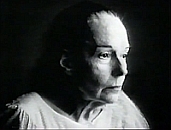 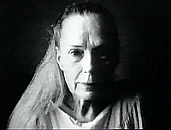
And A. J. Benza,
host of the documentary, introduces the
conclusion: ‘ … What a life! … ’
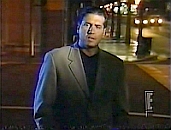
A Brown Bird Singing is the
background music to these two sections of the
documentary: Louise Brooks in the late 1920s,
and Louise Brooks as she aged.
The recording
by Eric Jupp and the Melodi Strings is
from the Chappell recorded music library (UK,
1959?).
An excerpt from the documentary
can be watched on YouTube.
A Brown Bird Singing is at 7:30 and
12:30.
A Brown Bird Singing
in True Hollywood
Story: Alfred Hitchcock
E!
Entertainment Television (USA, 1999)
television documentary
This
documentary tells the life and
career of the Hollywood director
Alfred Hitchcock. After an
introduction, the story is divided
into seven parts, each part being
followed by a teaser to the rest of
the programme, and by commercials.
An orchestral
version of A Brown Bird Singing
is the background music to the
beginning of the teaser which
announces the fourth part, with a
still of Hitchcock directing Grace
Kelly in To Catch a Thief,
and a
commentary: ‘Hitchcock
gets hot for a nice princess.
Later in the
course of the fourth part, A Brown
Bird Singing is again the
background music to the documentary.
The commentary runs: [In 1953,] ‘the
director became captivated by the
frosty beauty of a starlet named Grace
Kelly.’
Herb Steinberg, former studio head of
publicity, adds: ‘She
had that frigid manner around her.
Except each man looked at her and said
“I can melt that”.’
The commentary resumes: ‘That
was precisely the sort of attraction
Hitchcock could not resist. In Dial
M for Murder, Hitchcock cast the
actress as an adulterous wife. He
turned Kelly into a glamorous siren,
controlling every detail of her
appearance … Hitchcock
could control Kelly's wardrobe but not
her private life.’
Off the set the actress was having an
affair with her married co-star, Ray
Milland.
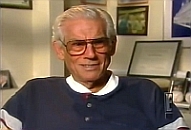 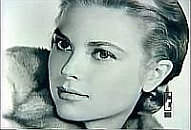 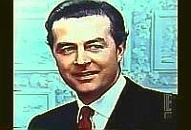
‘If
Hitchcock was jealous, the director kept
his feelings to himself. He again cast
Kelly as a seductress in
Rear Window. James
Stewart played Kelly's boyfriend
… Rear
Window is filled with sexual
tension that never reaches resolution.’
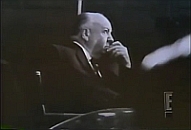 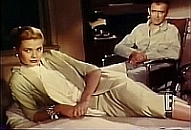
Released in 1954,
Dial M for Murder and Rear
Window were two big hits. ‘Hitchcock's
collaboration with Kelly propelled the
actress to international stardom.
Hitchcock was also on a roll.’
The director next cast Kelly with Cary
Grant in To Catch a Thief. The
film was shot on the French Riviera and
in the principality of Monaco. Released
in 1955, it was another hit.
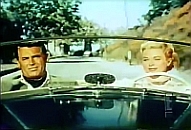 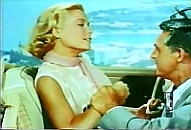 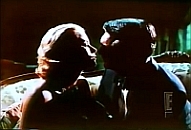
‘Hitchcock
had found his muse, or so he thought. In
January 1956, Grace Kelly became engaged
to Prince Rainier Ⅲ of Monaco. Suddenly,
the actress was lost to Hollywood and to
Hitchcock.’
Herb Steinberg concludes: ‘He
was devastated when she got married.’
This is the end of the fourth part of
the documentary, still to the orchestral
accompaniment of A Brown Bird
Singing.
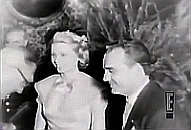 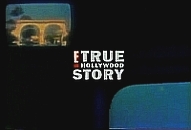
Not only is each part of the
documentary followed by a teaser to the
rest of the programme, but it also has
its own introduction. The fifth part is
introduced with a reminder to the viewer
that ‘at
age 57, Alfred Hitchcock lost his
favourite blonde muse to another man … But
the director's own star was about to
rise in a way he never dreamed,’
this intensified by A Brown Bird
Singing's lyrical orchestration
which segues into an ascending burst of
a clear harp glissando.
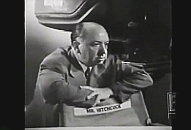 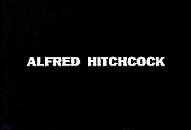
The recording of A Brown Bird
Singing by Eric Jupp and the Melodi
Strings is from the Chappell recorded music
library (UK, 1959?).
This documentary can be watched on
OK. A Brown Bird Singing is at
32:35, 37:08, 39:00, and 40:55.
A Brown Bird Singing
in Mysteries
& Scandals: [Jeffrey
Hunter]
E! Entertainment Television (USA, 2000)
television documentary
This biography of the
Hollywood actor Jeffrey Hunter focuses on
his changing fortunes.
A Brown Bird Singing is
the background music to the sequence about
his marriage with the actress Barbara Rush.
They were two upcoming young actors and both
ambitious. Their son Chris says that ‘their
whole lives were photographed—the quintessential
Hollywood couple—and it seems to me now …
very unreal.’
Though their professional lives were
coming together, their marriage was
falling apart.
The recording
of A Brown Bird Singing by Eric
Jupp and the Melodi Strings is from the Chappell
recorded music library (UK, 1959?).
This
documentary can be watched on OK. A Brown Bird Singing
is at 4:20.
A
Brown Bird Singing
in
Chappelle's Show
directed by Bobcat Goldthwait (USA, 2003)
television comedy show series :
season 1, episode 3
In the
final sketch of this episode, It's a Wonderful
Chest, Sheila is bemoaning the fact that her
bosom is overly huge. She wants to curse her big
breasts away. Dave Chappelle embodies an entity
who takes Sheila on a flight of fancy to reveal
how terrible life would have been to her without
them. And she happily decides to be proud of her
chest.
A Brown
Bird Singing tenderly accompanies Sheila's
relief.
The
recording by Eric Jupp and the Melodi Strings is
from the Chappell recorded music library (UK,
1959?)
A
Brown Bird Singing
in
Le Shah d'Iran, un homme à abattre [The
Shah of Iran, A Marked Man]
directed by Reynold Ismard (France, 2004)
television documentary
Mohammad
Reza Pahlavi, the shah of Iran, married three
times. This documentary about his domestic and
international politics also tells the
circumstances of his marriages to Fawzia of Egypt,
to Soraya Esfandiary, and
eventually to Farah Diba.
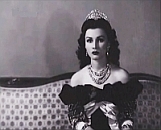
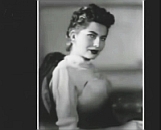
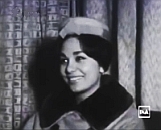
A
Brown Bird Singing is the background
music to each of these three stories.
The
recording
by Eric Jupp and the Melodi Strings is
from the Chappell recorded music library (UK,
1959?).
A
Brown Bird Singing
in
Secrets of the Lough - Part 1
directed by Michael Beatie (UK, 2004)
television documentary
A sequence
in this documentary evokes the history of
Whitehead, Northern Ireland, one of the ‘secrets’ of
the Belfast Lough.
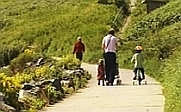
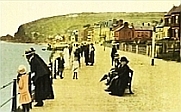
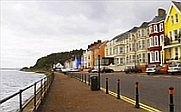
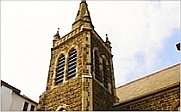
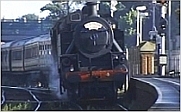
A
Brown Bird Singing is the background music
to a part of the sequence.
The
recording by Eric Jupp and the Melodi Strings is
from the Chappell recorded music library (UK,
1959?).
A
Brown Bird Singing
in
Coronation Street
directed by John Anderson (UK, 2005)
television serial: episode 6022
Sally and
Kevin really enjoyed having a day out to Blackpool
with their girls.
But ‘it's just a shame we've
got work tomorrow.’
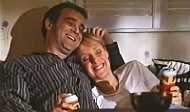
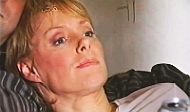
The radio
is playing A Brown Bird Singing.
The
recording by Eric Jupp and the Melodi
Strings is from the Chappell recorded music
library (UK, 1959?).
The
episode can be watched on YouTube. A Brown Bird
Singing is at 17:45.
A
Brown Bird Singing
in
Wellington Bomber
directed by Peter Williams (UK, 2010)
television documentary
One
weekend in the early 1940s, at an aircraft factory
in Broughton, Wales, a group of men and women
managed to build a Wellington Bomber in 23 hours
and 50 minutes. Hilda was
one of them.
She met
Percy Dodd at a dance, he got caught up to go in
the Navy, they married in a rush, and she never
saw him again for three and a half years.
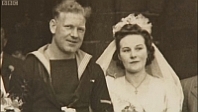
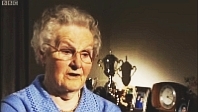
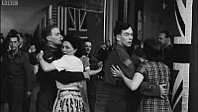
A
Brown Bird Singing accompanies their
story.
The
recording by Eric Jupp and the Melodi
Strings is from the Chappell recorded music
library (UK, 1959?).
The
documentary can be watched on YouTube. A Brown Bird
Singing is at 13:34.
A Brown Bird Singing
in Jul med Ernst
[Christmas With Ernst]
produced by Johan Norsebäck (Sweden, 2011)
television series: season 4,
episode 1
Ernst Kirchsteiger recorded his
yearly festive season programmes at Saxå, in the
barn he had just converted into a house the
previous summer.
After a break for commercials, the
programme resumes with A Brown Bird Singing
accompanying exterior and interior shots of the
house, with Ernst starting to make apple
conserve, and addressing his future audience.
The recording of A Brown Bird
Singing by Eric Jupp and the Melodi
Strings is from the Chappell recorded music
library (UK, 1959?).
A
Brown Bird Singing
in
Staying Home: The Experiment Concert
Spot Pocket Opera Theatre (Singapore, 2020)
digital concert
In June
2020 during the COVID-19 period, the Spot Pocket
Opera Theatre in Singapore ‘decided to shake
things up a little’ and put on a concert with
each performer staying at home. The soprano
Phoebe Chee sang A Brown Bird Singing,
accompanied by a string quintet and piano.
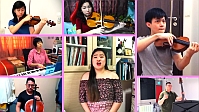
Mapletree
Arts in the City uploaded the concert to YouTube. A Brown Bird
Singing is at 9:00.
|
Consolation
(1924)
in Phillip Sear plays…:
Haydn Wood, Consolation
Phillip Sear (UK, 2021)
videoed performance
On 5 October 2021, the English pianist
Phillip Sear from Haywards Heath, West Sussex,
recorded a home video of himself sight-reading Consolation
for solo piano.
|
Dawn
in the Valley of the Kings (1929)
from Egypta, An Egyptian Suite
in Phillip Sear plays…:
Haydn Wood, Dawn in the Valley of the Kings
Phillip Sear (UK, 2021)
videoed performance
On 20 November 2021, the English pianist
Phillip Sear from Haywards Heath, West Sussex,
recorded a home
video of himself sight-reading Dawn in
the Valley of the Kings for solo piano.
|
Day Dreams, Morceau de
Concert (1914)
in The Aspidistra Drawing
Room Orchestra in Concert for Members of the Light
Music Society - Part 2
Sands Films (UK, 2021)
online concert
In a concert of light classical music
pre-recorded at the Sands Films Music Room in
Rotherhithe, London, and
broadcast online by the Light Music Society
on 28 November 2021, the Aspidistra Drawing Room
Orchestra, led by oboist Adam Bakker, performed Haydn
Wood's Day Dreams.
Earlier in the concert, the Aspidistra
Drawing Room Orchestra performed Haydn Wood's Love-light.
The Aspidistra Drawing Room Orchestra
uploaded the concert to YouTube. In Part 2, Day
Dreams is at 13:45.
|
The Doctor (1923)
from Three Famous Pictures
in Phillip Sear plays…:
Haydn Wood, The Doctor
Phillip Sear (UK, 2021)
videoed performance
On 31 October 2021, the English pianist
Phillip Sear from Haywards Heath, West Sussex,
recorded a home
video of himself sight-reading The Doctor
for solo piano.
|
Dreaming, Morceau de Concert
(1925)
in Phillip Sear plays…:
Haydn Wood, Dreaming, Morceau de Concert
Phillip Sear (UK, 2021)
videoed performance
On 5 October 2021, the English pianist
Phillip Sear from Haywards Heath, West Sussex,
recorded a home video of himself sight-reading Dreaming
for solo piano.
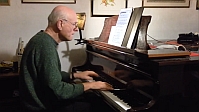
He has also recorded in the same way Consolation,
Dawn in the
Valley of the Kings, The Doctor, The
Laughing Cavalier, Roses of Picardy, Slave Dance, The Unforgotten Melody, and When
the Home-Bells Ring Again.
Phillip Sear uploaded the video to YouTube.
Dreaming, Morceau de
Concert
in Happy New Year
Sands Films (UK, 2023)
online concert
The Aspidistra Drawing Room Orchestra,
led by oboist Adam Bakker, gave a concert of light
classical music broadcast online live on 3 January
2023 from the Sands Films Music Room in Rotherhithe,
London.
The flautist introduced ‘a piece of
music to help you reflect on your New Year's
resolutions. It is appropriately titled Dreaming,
by Haydn Wood.’
The concert can be watched on vimeo. The introduction to Dreaming
is at 46.00, and Dreaming is at 46:20.
Dreaming, Morceau de
Concert
in Tea & Symphony:
[A rehearsal of Dreaming and Serenade
to Youth, by Haydn Wood]
Gary Widland (Canada, 2023)
videoed performance
In a concert given on 12 February 2023
at Sooke Community Hall, in Sooke, British Columbia,
Canada, Yariv
Aloni conducted the Sooke Philharmonic
Orchestra in Dreaming, Morceau de Concert,
and Serenade to
Youth, by Haydn Wood.
Gary Widland videoed a rehearsal of
Wood's pieces on the day before at the concert
venue.
The rehearsal can be watched on the Haydn Wood Music channel on
YouTube. Dreaming is at 0:25, and Serenade
to Youth is at 4:00.
|
Elizabeth of England (1947–52)
in [Police Choir]
Pathé Pictorial (UK, 1953)
newsreel
‘It's hats off for a very special
purpose. Placing on record their homage to Britain's
queen are the Choir of Stoke
Newington Metropolitan Police in a tribute by
white-haired Haydn Wood, one of Britain's most
distinguished composers, and music that was first
written for a happy young princess, music that has
survived a
national tragedy [the death of King George
VI] to honour’ And immediately the Choir starts
singing: ‘Elizabeth of England.’
Haydn Wood is filmed in the studio
standing beside the organ accompanist.
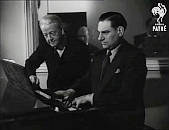
The Choir sings a version of Elizabeth
of England arranged for male voices by Haydn
Wood.
The newsreel can be watched on the British Pathé channel on
YouTube.
More on this newsreel here on this page.
|
Harvest Home (1921)
from Harvest Time, Suite
in Good
Health to Scotland
directed by Stanley L. Russell (UK, 1943)
government sponsored film
|
Harvest Time, Suite (1921)
1. The Harvesters' Dance
2. Interlude
3. Harvest Home
in Good Health to Scotland
directed by Stanley L. Russell (UK, 1943)
government sponsored film
Made by the Ministry of Information for
the Department of Health for Scotland, this is a
survey of public health services covering isolated
glens, lonely islands, and cities and towns in
Scotland.
Harvest Home accompanies a series
of sequences about infant consultation, nursery
schools, school medical services, hygiene at school,
and ‘the girls [who] are taking a step further, they
are taught laundry work.’
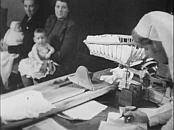 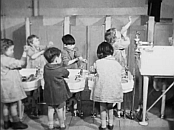 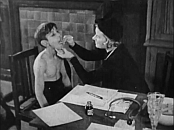 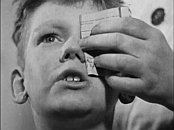 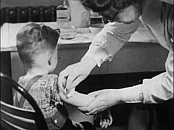 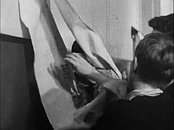 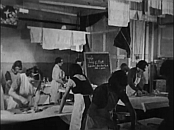
The music segues into Interlude
to accompany sequences about the issue of milk in
schools, and the supply of lunches, followed by a
sequence about holiday camp schools. ‘It is our duty
to see that the new generation is well nourished, well
trained, and kept in sound health.’
The Harvesters' Dance accompanies
a sequence about an emergency hospital built before
the war in preparation for heavy raid casualties. It
is now being used in a far-seeing industrial health
experiment to preserve the health of young workers
whose condition might lead to permanent disablement.
‘Rest, good meals … fresh air and companionship, and
pleasant surroundings are a major part of the
treatments.’
The recordings are from the Boosey &
Hawkes mood music library with William Hodgson
conducting the
Regent Concert Orchestra (UK, 1939?).
This film can be watched on YouTube.
Harvest Home is at 4:52, Interlude at
7:46, and The Harvesters' Dance at 11:12.
|
The Harvesters' Dance (1921)
from Harvest Time, Suite
in Good
Health to Scotland
directed by Stanley L. Russell (UK, 1943)
government sponsored film
The Harvesters' Dance
in Ian Hislop's Stiff
Upper Lip, An Emotional History of Britain
- Part 3: Last Hurrah?
directed by Tom McCarthy (UK, 2012)
television documentary
How the British have expressed their
feelings throughout the 20th
century.
Ian Hislop drives to the British
Cartoon Archive at Canterbury. An excerpt from The
Harvesters' Dance accompanies the drive to
the Archive and finishes while he comments on the
cartoon Adaptability to Foreign Conditions
by Pont (aka Graham Laidler).
The recording is from the
Boosey & Hawkes mood music library with William
Hodgson conducting the
Regent Concert Orchestra (UK, 1939?).
This documentary can be watched on YouTube.
The Harvesters' Dance is at 12:50.
The Harvesters' Dance
in Britain on Film: Island
Nation
produced by Kathryn Williams (UK, 2013)
television documentary series: season
2, episode 3
Using several of the Rank
Organisation's Look at Life documentary
shorts produced and released in the UK in
the 1950s, this episode features footage
from Britain's offshore isles.
After an introductory sequence
followed by the episode title, an excerpt from The
Harvesters' Dance accompanies a series of
shots of Fair Isle.
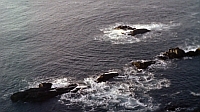
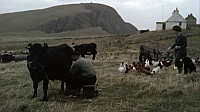  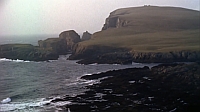
These shots are each individual
excerpts from Island of Men (the Look at
Life documentary on Fair Isle), released in
1959. The Harvesters' Dance was no part of
it, it was added to the television documentary to
link the shots
together.
The recording is from the Boosey &
Hawkes mood music library with William Hodgson
conducting the
Regent Concert Orchestra (UK, 1939?).
|
Homage, March
(1935)
in Women Away from Home
directed by Gilbert Gunn (UK, 1942)
government sponsored film
Made for the Ministry of Information,
this film is about three young women who are moved
to Birmingham where they are employed in a munition
factory, and how they make the best of it.
‘War means movement. It means the
massing of troops and workers on the war front or
the home front. It means leaving home … Today the
call up of women means that more and more are
working away from home.’
The beginning of Homage, March
accompanies the opening credits and the beginning of
the film; and the final bars accompany the happy
ending.
The recording is by the Light Symphony
Orchestra conducted by Haydn Wood himself for His
Master's Voice (London, 13 March 1935).
The film can be watched on the Imperial War Museum website. Homage,
March is at 0:00 and 9:55.
|
The Horse Guards,
Whitehall: March (1946)
from London Landmarks, Suite
in Wise and Otherwise
directed by K. O. King and L. Thompson (UK, 1947)
sponsored film
This film about road safety was
produced by the Cambridge Accident Prevention
Council.
The Horse Guards, Whitehall is
the background music to the opening and closing
credits.
The recording is from the Chappell
recorded music library (London, orchestra and date
both unknown).
The film can be watched on the East Anglian Film Archive
website. The Horse Guards, Whitehall is at
0:00 and 33:29.
The Horse Guards,
Whitehall: March
in Come With Me:
Berwick-upon-Tweed
produced by Norman Cobb (UK, 1950)
travelogue
The well-known broadcaster Richard
Dimbleby opens his diary at the page of his
appointments in Berwick-upon-Tweed which he visited
and where he met with locals.
The Horse Guards, Whitehall
accompanies the opening credits.
The Horse Guards, Whitehall
accompanies the end of the film when Dimbleby put an
end to his visit,‘time now to close the diary.’
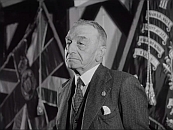 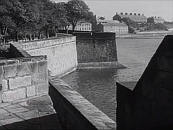 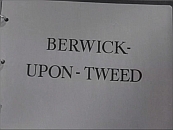 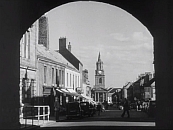
The recording is from the Chappell
recorded music library (London, orchestra and date
both unknown).
Come With Me: Berwick-upon-Tweed
can be watched on the British Film Institute
website. The Horse Guards, Whitehall is at 0:00 and
19:38.
The Horse Guards,
Whitehall: March
in Come With Me: Swansea
produced by Norman Cobb (UK, 1951)
travelogue
The well-known broadcaster Richard
Dimbleby opens his diary at the page of his
appointments in Swansea which he visited and where
he met with locals.
The Horse Guards, Whitehall
accompanies the opening credits.
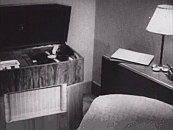 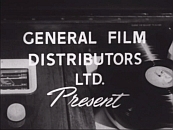 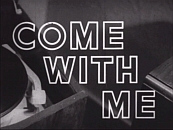 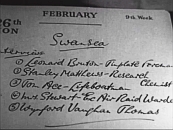
And The Horse Guards, Whitehall
accompanies the very end of the film.
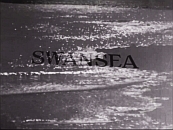
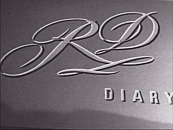
The recording is from the Chappell
recorded music library (London, orchestra and date
both unknown).
Haydn Wood's Torch of Freedom and The
Seafarer accompany other moments in
the film.
Come With Me: Swansea can be
watched on the British Film Institute
website. The Horse Guards, Whitehall is at
0:00 and
16:12.
The Horse Guards,
Whitehall: March
in Come With Me:
Bridport
produced by Norman Cobb (UK, 1951)
travelogue
The well-known broadcaster Richard
Dimbleby opens his diary at the page of his
appointments in Bridport and the surroundings,
where he met with locals whose trade, for most of
them, is connected to the sea.
The Horse Guards, Whitehall
accompanies the opening credits.
And The Horse Guards, Whitehall
accompanies the closing of the diary.
The recording is from the Chappell
recorded music library (London, orchestra and date
both unknown).
Come With Me: Bridport can be
watched on the British Film Institute
website. The Horse Guards, Whitehall is at
0:11 and
19:14.
The Horse Guards,
Whitehall: March
in Come With Me:
Norwich
produced by Norman Cobb (UK, 1952)
travelogue
The well-known broadcaster Richard
Dimbleby opens his diary at the page of his
appointments in Norwich which he visited and where
he met with locals.
The Horse Guards, Whitehall
accompanies the opening credits.
The recording is from the Chappell
recorded music library (London, orchestra and date
both unknown).
Come With Me: Norwich can be
watched on the East Anglian Film Archive
website. The Horse Guards, Whitehall is at
0:11 and 17:13.
The Horse Guards,
Whitehall: March
in Agatha Christie's
Poirot: The Million Dollar Bond Robbery
directed by Andrew Grieve (UK, 1990)
television series: season 3, episode
3
A London bank manager is responsible
for taking one million dollars in Liberty Bonds to
the bank's branch in America. Poirot is hired to
keep an eye out for any trouble regarding the
bonds, so he and his friend Hastings are able to
ride the maiden voyage of the Queen
Mary.
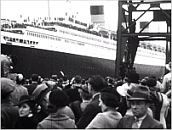
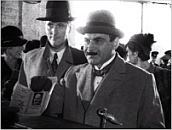
Another case for Poirot. And there
are over two thousand cases which are being
loaded safely
on board.
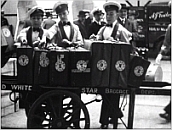
The boarding and the departure are
told through a reconstructed newsreel which
includes original footage from British Movietone News.
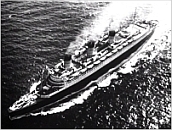 The
Horse Guards, Whitehall is the background
music for the reconstructed newsreel.
The maiden voyage of the Queen
Mary took place in 1936 but The
Horse Guards, Whitehall was published in 1946.
The recording is
from the Chappell recorded music library (London,
orchestra and date both unknown).
The episode can be watched on YouTube.
The Horse Guards, Whitehall is at 20:25.
The Horse Guards,
Whitehall: March
in The
Extraordinary
ShowBoat (Australia, 1993)
television series: programme 18
The last part of
this weekly television programme looks back on the
1946 Australian Epsom at Randwick, Sydney.
Left fifteen lengths behind at the start because
of the starter's mistake, Shannon, ridden by Darby
Munro, made a sensational finish in second place
half a head behind the winner.
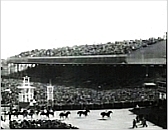
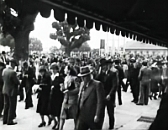
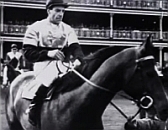
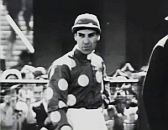
Entirely
illustrated with archive footage, this part of the
programme is first accompanied by
The Horse
Guards, Whitehall.
The recording is
from the Chappell recorded music library (London,
orchestra and date both unknown).
This programme can be watched on YouTube.
The Horse Guards, Whitehall is at 36:50.
The Horse Guards,
Whitehall: March
in Fifties British War
Films: Days of Glory
directed by Hans Petch (UK, 2012)
television documentary
In the 1950s, Britain looked back on
its epic World War Ⅱ effort in films such as The Dam Busters,
The Cruel Sea,
and The Colditz
Story. However, even at the time these
productions were criticised for being class-bound
and living in the past.
The journalist
and historian Simon Heffer argues that these films
have real cinematic merit and a genuine cultural
importance, that they tell us something
significant not only about the 1950s Britain from
which they emerged, but also about what it means
to be British today.
After Heffer's
introduction, the documentary starts with a series
of short excerpts quickly
paced to the accompaniment of The
Horse Guards, Whitehall.
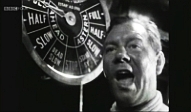
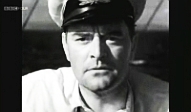
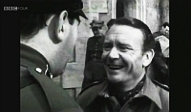
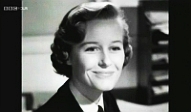
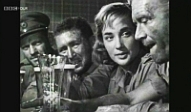
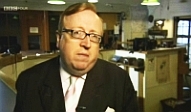
Another series of
short excerpts including film posters terminates
the documentary, again to
the accompaniment of The
Horse Guards, Whitehall which gives a
confident mood to the documentary. And Heffer's
final words are followed by the final bars of the
music.
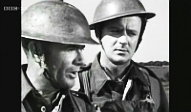
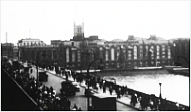
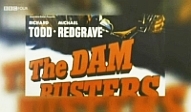
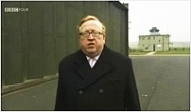
The recording is
from the Chappell recorded music library (London,
orchestra and date both unknown).
Haydn Wood's Sketch of a Dandy
accompanies another moment in the documentary.
This documentary can be watched on DAILYMOTION. The Horse
Guards, Whitehall is at 0:59 and 57:03.
The Horse Guards,
Whitehall: March
in Iain McGlinchey
Plays the Paramount 450
Paramount Organ Works (UK, 2017)
videoed performance
Iain McGlinchey plays The Horse
Guards, Whitehall on the Paramount 450
virtual theatre pipe organ.
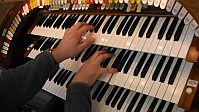
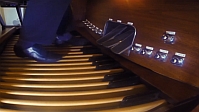
Iain
McGlinchey uploaded this video to YouTube.
The
Horse Guards, Whitehall: March
in
Haydn Wood: London Landmarks, 3. The
Horse Guards, Whitehall
City of Birmingham Symphony Orchestra (UK,
2021)
online concert
In a
socially distanced configuration due to COVID-19
and without a live audience, the City of
Birmingham Symphony Orchestra conducted by John
Wilson performs The Horse Guards, Whitehall
at Birmingham Symphony Hall. This performance
was part of a digital concert entitled ‘John
Wilson's Summer Delights.’
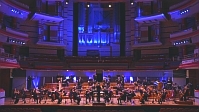 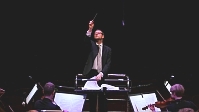
The
CBSO uploaded the performance to YouTube.
The CBSO also uploaded to YouTube a trailer for
the complete concert with an excerpt from The
Horse Guards, Whitehall at
0:20.
The
Horse Guards, Whitehall: March
in
Historic Douglas Promenade
produced by Charles Guard (Isle of Man,
2024)
documentary
With
large excerpts from archive films, the
documentary narrated by Charles Guard looks
at Douglas Promenade during its tourist
heyday from the 1920s to the 1970s.
‘By
the early fifties, things were much more
relaxed on Douglas beach. Donkey rides,
Punch and Judy of course, and deckchairs …
from where you could watch the family
enjoying a paddle in the sea. [And] the
feature of every seaside town was the
bathing beauty competition.’
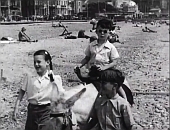
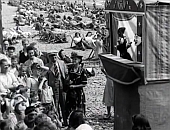
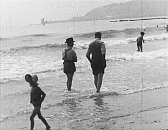
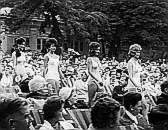
An
excerpt of the middle section of The
Horse Guards, Whitehall accompanies
this part of the documentary.
The
recording is by the Slovak Radio Symphony
Orchestra, conducted by Ernest Tomlinson
(Bratislava, Slovakia, April 1993).
Charles
Guard uploaded the documentary to YouTube.
|
I Look Into Your Garden (1924)
in Charles Hackett,
Leading Tenor of the Chicago Civic Opera Co.
Vitaphone Corporation (USA, 1929)
The American tenor Charles Hackett
recorded this ballad by Haydn Wood on Vitaphone, the
new sound film system with which Warner Bros. put an
end to the silent movies era. Such films were shown
in cinemas as a supplement to the main programme.
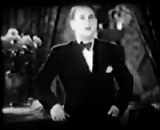
After he had sung I Look Into
Your Garden, Charles Hackett carried on with
another ballad, I Heard You Singing,
composed by Eric Coates. The piano accompanist's
name is not known.
|
I Love to Hear You Singing (1928)
in [I Love to Hear You
Singing, Ampico Piano Roll]
Stephen Brittain (USA, 2011)
A player piano plays I Love to
Hear You Singing.
The piano roll was probably recorded
for Ampico by the pianist Edgar Fairchild in New
York City in the
late 1920s.
Stephen Brittain uploaded the video to
YouTube.
|
Interlude (1921)
from Harvest Time, Suite
in Dig for Victory
Spectator Production (UK, 1941)
government sponsored film
Produced by the Ministry of
Information during World War Ⅱ, this short film was
an appeal to the British public to grow vegetables.
‘Food is just as important a weapon of war as guns.’
A sequence shows various activities in
the vegetable garden's year, with a commentary
offering advice
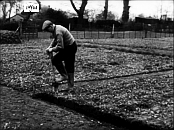  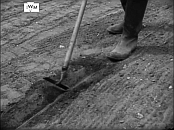 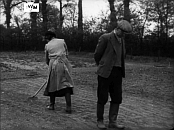
including pieces of advice about planting potatoes,
onion seedlings, and lifting cabbages.
Interlude is the background
music to most of the sequence.
The recording is from the Boosey
& Hawkes mood music library with William
Hodgson conducting the
Regent Concert Orchestra (UK, 1939?).
The film can be watched on the Imperial War Museum website.
Interlude is at 2:28.
Interlude
in Good
Health to Scotland
directed by Stanley L. Russell (UK, 1943)
government sponsored film
Interlude
in Heir to the Throne
British Movietone News (UK, 1944)
government sponsored film
The Ministry of Information
commissioned this film in the year of Princess
Elizabeth's eighteenth birthday. It is a montage
of excerpts from various newsreels showing
Elizabeth since she was born.
Interlude (with some editing)
is the background music to a short section of the
film.
The recording is from the Boosey
& Hawkes mood music library with William
Hodgson conducting the
Regent Concert Orchestra (UK, 1939?).
The film can be watched on YouTube.
Interlude is at 0:54.
Interlude
in Natural World: On
the Trail of Tarka
produced by Philippa Forrester and Charlie
Hamilton James (UK, 2006)
television documentary
A film-maker is in search of otters
on the River Torridge in Devon:
– This is Tarka Country, North Devon, immortalized
by the author Henry Williamson in a much loved
story about an otter who lived and died here.
‘He was called Tarka, which is the
name given to otters many years ago, by men
dwelling in hut circles on the moor. It means
little water wanderer, or wandering as water.’
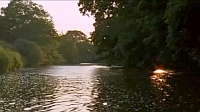 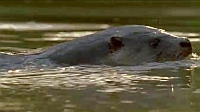 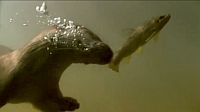 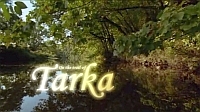
Interlude, with its long
held notes descending into two very fast notes,
accompanies the documentary's opening sequence.
The recording is from the Boosey
& Hawkes mood music library with William
Hodgson conducting the
Regent Concert Orchestra (UK, 1939?).
This documentary can be watched on VK
Video. Interlude is at 0:18.
|
It Is Only a Tiny Garden
(1916)
in [Raymond Allen]
New Sound Pictorial (UK, 1941)
newsreel
The tenor Raymond Allen sings It
Is Only a Tiny Garden accompanied by an
orchestra. Various shots of a
country garden illustrate the song.
The newsreel can be watched on the British Pathé channel on
YouTube.
|
The
Laughing Cavalier
(1923)
from Three Famous Pictures
in Phillip Sear plays…:
Haydn Wood, The Laughing Cavalier
Phillip Sear (UK, 2021)
videoed performance
On 21 November 2021, the English
pianist Phillip Sear from Haywards Heath, West
Sussex, recorded a
home video of himself sight-reading The
Laughing Cavalier for solo piano.
|
Longing, Morceau de
Concert (1916)
in Under the Roofs of
Paris (Sous les toits de Paris)
directed by René Clair (France, 1930)
In his room under the roof, Albert
takes in a troubled Pola for the night—she sleeping
in his bed and he on the floor. Early in the
morning, there are incessant knocking and loud yelling outside
his door. Believing it is the police, Albert hides
Pola under a heap of blankets before he opens the
door.
Actually, it is Bill, demanding that
Albert keep his big bag because he's gotta take a
trip. When Bill plunks down on the bed, Pola
screams.
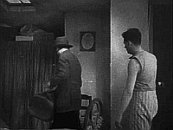
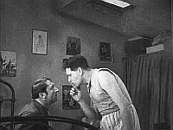 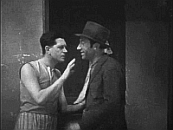
Bill gone,
Albert tries in vain to kiss Pola.
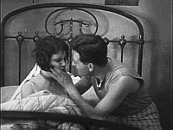
Some hours
later, Pola starts to leave, their good-byes
revealing the two of them in limbo regarding their
relationship.
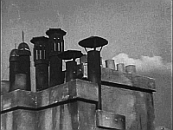
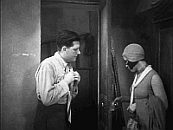
An excerpt
from Longing for orchestra accompanies
this sequence.
Sous
les toits de Paris can be watched on VK Video. Longing is
at 42:21.
Longing,
Morceau de Concert for piano
(1917)
in
[Paul Guinery, On the Lighter Side]
videoed by Michael Maxwell Steer (UK, 2024)
videoed concert
In
November 2024, the pianist Paul Guinery gave a
short concert ‘on the lighter side’ at the monthly
Aperitif Recital at the Savile Club, London. He
began with Haydn Wood's Longing, Morceau de
Concert.
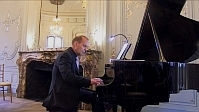
Before he introduced the next piece,
he commented to the audience on Longing,
Haydn Wood, and light music: ‘That piece … to me
is the epitome of light music … by Haydn Wood who
was a foremost exponent [of light music] really in
the 1920s, 30s, 40s.’
The video can be watched on YouTube.
|
Love in Arcady, Serenade
(1912)
in Last of the Pagans
directed by Richard Thorpe (USA, 1935)
‘Below the equator, [in one of] those
distant isles where the shadow of the white man's
civilization is but a
rumour,’ Lilleo and her girlfriends are
swimming and playing in fresh water. With splashes
and cries of joy, the
serene mood of the middle section of Love
in Arcady accompanies the scene.
Suddenly, disturbing music (title and
composer not known) signals the approach of men from
another island on
a war footing, ‘in search of wives.’ The
music of Love in Arcady resumes after Taro
has noticed Lilleo, and has fallen in love with her.
Love in Arcady was
re-orchestrated for the film by Nat W. Finston.
Last of the Pagans can be
watched on VK Video. Love in Arcady
is at 1:34, and resumes at 2:45.
Love in Arcady, Serenade
in [Love in Arcady (Haydn
Wood), Cello Played by Cedric Sharpe]
The Colonel (UK, 2011)
The Colonel in the grange of the
British Imperial YouTube Broadcasting plays Love
in Arcady performed by Cedric Sharpe on cello,
on His Master's Voice record No. E283.
Sharpe recorded his arrangement for
cello and piano (published in 1921) of Wood's
original composition, with Cecil Dixon on piano, at
Hayes, Middlesex, UK, on 22 September 1922.
The video can be watched on YouTube.
The Colonel also played and videoed
the same way, then uploaded to YouTube:
in 2011,
Roses of Picardy (1916)
sung by Richard Tauber (London, 22 April 1936)
in 2012,
Roses of Picardy by the
Lutetia Wagram Symphony Orchestra (Paris, June 1929)
The Village Wedding, The Doctor, and The Laughing Cavalier,
all movements of Three Famous Pictures
(1923), by the Court Symphony Orchestra conducted by
Haydn Wood (UK, 1924)
in 2013,
Roses of Picardy by
Dick Anderson on the musical saw (UK, 1931?)
in 2015,
Roses of Picardy sung
by Ernest Pike (London, 12 May 1917)
in 2016,
Wonderful World of Romance
(1918) sung by Elsie Stralia (London, 18 September
1919)
A May-Day Overture
(1919) by Joseph Lewis and His Orchestra conducted
by Haydn Wood (UK, 1934)
in 2017,
Roses of Picardy, Waltz
(1919) by The Troubadours (New York City, 9 July
1923)
Little Yvette (1920)
sung by John McCormack (Camden, New Jersey, USA, 8
April 1924)
|
Love-light
(1956)
in The Aspidistra
Drawing Room Orchestra in Concert for Members
of the Light Music Society - Part 1
Sands Films (UK, 2021)
online concert
In a concert of light classical
music pre-recorded at the Sands Films Music Room
in Rotherhithe, London, and
broadcast online by the Light Music
Society on 28 November 2021, the Aspidistra
Drawing Room Orchestra, led by oboist Adam Bakker,
performed Haydn Wood's Love-light. The
singers were Liz Menezes and
Camilla Cutts.
Later in the concert, the Aspidistra Drawing Room
Orchestra performed Haydn Wood's Day Dreams.
The Aspidistra Drawing Room
Orchestra uploaded the concert to YouTube. In Part 1, Love-light
is at 9:38.
|
Love Me, Vocal Waltz
(1926)
in Mezzo-soprano
Camilla Cutts Performs Songs by Haydn Wood
videoed by Ralph Thompson and Brian Joscelyne
(UK, 2009)
videoed concert
The Robert Farnon Society at its
meeting of 5 April 2009 at the Park Inn Hotel,
Russell Square, London, paid
tribute to Haydn Wood to commemorate the
fiftieth anniversary of his death.
In a concert of rarely played
compositions by Haydn Wood, Camilla Cutts
accompanied by the Aspidistra Drawing Room
Orchestra, sang Love Me, Vocal Waltz, I
Love Your Eyes of Grey, and Pretending;
and accompanied by David Snell on digital piano,
she sang Casey the Fiddler (with
Marjorie Cullerne on violin) and
The
Stars Looked Down.
The concert was videoed for the
Robert Farnon Society and excerpts were edited for
the Haydn Wood Music Library and Archive.
Camilla Cutts's performance can be
watched on the Haydn Wood Music channel on
YouTube. Love Me, Vocal Waltz is at 0:47,
I Love Your Eyes of Grey is at 3:40, Casey
the Fiddler is at 6:20, The Stars Looked
Down is at 8:40, and Pretending is
at 11:14.
|
Love's Garden of Roses
(1914)
in Kino-Eye (Кuно-ƨлaз)
researched by Dziga Vertov (USSR, 1924)
documentary
This documentary champions the work
of a troop of Young Pioneers, a group of young
teens who, as they travel from village to village,
help out wherever they can, zealously improving
society by illuminating the Soviet path for the
benefit of the unenlightened.
Robert Israel, an American silent
film score composer, arranged circa 1998 an
accompaniment to Kino-Eye with a medley of
previously known works such as L'Internationale
and ‘June’ from Tchaikovsky's The Seasons.
In this medley, the first six notes of Haydn
Wood's song Love's Garden of Roses (to the
words ‘Come dearest heart, 'mid the’) appear five
times played on piano to accompany a sequence
dedicated to the young tin plating utensils,
followed by a moment when they are playing
draughts while one of them is treated for bruises.
After each of these five appearances, the pianist
continues in the same mood and tempo as in Wood's
song.
The pianist's name is not known, it
could be Robert Israel himself.
Kino-Eye can be watched on YouTube. The six notes that
directly quote Haydn Wood's song are at 17:16,
17:27, 17:44, 17:50, and 18:02.
|
Lutine Ahoy, A Nautical
Sketch (1954)
in Lutine Ahoy: A
Nautical Sketch by Haydn Wood
produced by Charles Guard (Isle of Man, 2024)
videoed performance
On 24 November 2024, at the Villa
Marina in Douglas, Isle of Man, in a gala concert
entitled ‘Great British Composers,’ the Isle of
Man Symphony Orchestra conducted by Maurice Powell
performed Lutine Ahoy, A
Nautical Sketch.
Lutine Ahoy, a march with
jaunty, nautical-flavoured tunes, concluded the
gala concert given on the retirement of the
orchestra's musical
director since 2004, Maurice Powell.
Charles Guard uploaded the video to
YouTube.
The video can also be watched on the Haydn Wood Music channel on
YouTube.
|
Mannin Veen, "Dear Isle
of Man", A Manx Tone Poem (1933)
‘The Manx Fiddler’
a tune from Mannin Veen
in Marjorie
Cullerne Performs Violin Pieces by Haydn
Wood
videoed by Ralph Thompson and Brian Joscelyne
(UK, 2009)
videoed concert
Mannin Veen, "Dear Isle
of Man", A Manx Tone Poem
in Mannin Veen, Haydn
Wood
videoed by Huy Cat (USA, 2018)
videoed concert
On 7 March 2018, at the Callanwolde
Arts Center in Atlanta, Georgia, in a concert
entitled ‘Symphonic Metamorphosis,’ the Atlanta
Youth Wind Symphony conducted by Scott A. Stewart
performed Mannin Veen.
The video can be watched on YouTube.
Mannin Veen, "Dear
Isle of Man", A Manx Tone Poem
in Symphonic Band
- June 2020: Mannin Veen, Haydn
Wood
Arts Mackenzie (Canada, 2020)
virtual performance
During the COVID-19 lockdown in
Ontario, the Alexander Mackenzie High School
Symphonic Band put on ‘a
socially distanced, virtual’ performance
of Mannin Veen.
They played a shortened version of Mannin
Veen. The Head of Music, Eric Hudspith,
conducted the band.
This performance can be watched on YouTube.
|
A May-Day, Overture (1919)
in The
Fire Services at War
produced and edited by Sylvia K. Cummins (UK,
1947)
government
sponsored film
Produced for the Home Office and
the Scottish Home Department, the film tells how
the United Kingdom survived the Blitz and
especially the German use of incendiary weapons.
A May-Day is the background
music to a series of shots, the sound of a
flying bomb, and a commentary telling about the
German attacks with V-1 and V-2 flying bombs in
retaliation for the Normandy landings.
The recording is from the Boosey
& Hawkes mood music library with Serge Krish
conducting the New Concert Orchestra (UK, 1946?).
The film can be watched on YouTube. A May-Day
is at 40:30 and resumes at 43:40.
A May-Day, Overture
in Men, Women, and
Clothes - Part 6: Facing the
Elements
devised and written by Doris Langley Moore (UK,
1957)
television documentary
This documentary reveals what it
took to be stylish through over 250 years of
British fashion history.
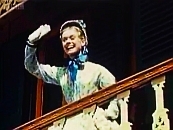
The Victorians paid homage to
summer, with men allowed to appear at a picnic in
their shirt-sleeves. But girls were still
overdressed with layers of underclothing, tight
waists, and crinolines.
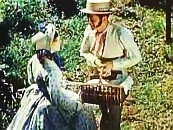
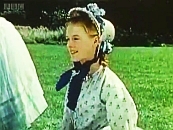
Although the term Grecian sandals
was applied to certain shoes, they were nothing
like the light cool shoes of the mid-20th
century.
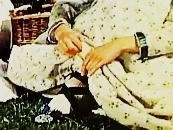
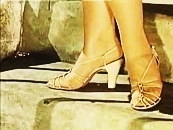
Part of the introduction of
A May-Day is the background music for this
sequence.
The recording is from the Boosey
& Hawkes mood music library with Cédric Dumont
conducting
the New Concert Orchestra (UK, 1946?).
|
Merridale, Quick March (1948)
in Slaithwaite Brass
Band: A Village Band
produced by Claire Hudson (UK, 2015)
documentary
This documentary's soundtrack does
not include any of the music of Merridale.
Nevertheless, the commentary tells that the
Slaithwaite Band's ‘success since its formation
was also reflected through attracting world-famous
composer Haydn Wood; he wrote a march, Merridale,
for the band, first performed in 1948 and recorded
by the band in 1975.’ This narration accompanies a
pan shot of a LP recorded by the band, together
with its sleeve's front and back covers in a
picture frame; this LP is titled Merrydale.
Actually, this LP recorded in 1975
does not include Merridale.
More about Haydn Wood, the
Slaithwaite Band, and Merridale here on the Haydn Wood
Music Library and Archive website.
videoed
performance The footage about Merridale
is at 3:14.
Merridale,
Quick March
in Merridale by Haydn
Wood
Heritage Quay (UK, 2017)
videoed concert
During the Yorkshire Music Weekend
at Heritage Quay (Huddersfield, UK) on 29 July
2017, the Woodsome Beck ensemble premiered an
arrangement by June Asquith of Merridale,
Quick March.
This
excerpt from the concert can be watched on YouTube.
|
Montmartre March (1935)
from Paris, Suite
in
[Haydn Wood: Montmartre March from
Paris, Suite]
Ohio State University (USA, 2024)
videoed performance
During the
North Central Division Conference of the College
Band Directors National Association, which took
place at the Ohio State University, Columbus, the
Youngstown State University Wind Ensemble
conducted by its
musical director Michael S. Butler, gave
a concert in the Weigel Auditorium on 6 April
2024. The programme included Haydn Wood's Montmartre
March in an arrangement for concert band by
Robert Hawkins published in 1958.
The
Youngstown State University uploaded the
performance to YouTube.
|
Nelson's Column,
Trafalgar Square (Miniature Rhapsody) (1946)
from London Landmarks, Suite
in
Haydn Wood: London Landmarks, [1.
Nelson's Column, Trafalgar Square]
City of Birmingham Symphony Orchestra (UK, 2021)
videoed
performance
In a
socially distanced configuration due to COVID-19
and without a live audience, the City of
Birmingham Symphony Orchestra conducted by John
Wilson performs Nelson's Column, Trafalgar
Square at Birmingham Symphony Hall.
The CBSO
uploaded the performance to YouTube.
|
Prelude
(1934)
in Marjorie Cullerne
Performs Violin Pieces by Haydn Wood
videoed by Ralph Thompson and Brian Joscelyne
(UK, 2009)
videoed concert
The Robert Farnon Society at its
meeting of 5 April 2009 at the Park Inn Hotel,
Russell Square, London, paid
tribute to Haydn Wood to commemorate the
fiftieth anniversary of his death.
In a concert of rarely played
compositions by Haydn Wood, Marjorie Cullerne
performed four of Wood's pieces for violin with
piano accompaniment.
But first she strolled from the back
of the room to the stage, while playing a few bars
of ‘The Manx Fiddler’ tune from Wood's Mannin
Veen.
She segued into the obbligato she
arranged for Casey the Fiddler, a Haydn
Wood's song which was performed by the
mezzo-soprano Camilla Cutts accompanied by David
Snell on digital piano.
Later, she gave Prelude, Caprice,
and Mélodie Plaintive, accompanied by
David Snell on digital piano.
And Marjorie Cullerne before playing
the final piece Elfin Dance, took the
microphone to tell that her great-uncle Haydn Wood
had sent her the sheet music he had autographed
for her when she was eleven years old.
The concert was videoed for the
Robert Farnon Society and excerpts were edited for
the Haydn Wood Music Library and Archive.
Marjorie Cullerne's performance can
be watched on the Haydn Wood Music channel on
YouTube. ‘The Manx Fiddler’ is
at 0:42, Casey the Fiddler is at
1.21, Prelude is at 3:39, Caprice
is at 6:37, Mélodie Plaintive is at 9:34,
spoken introduction to Elfin Dance is at
13:01, and Elfin Dance is at 13:37.
|
Queen Mary's Garden,
Regent's Park, An Impression (1948)
from Snapshots of London, Suite
in Interlude: [Banks
and Streams]
British Broadcasting Corporation (UK, 1953)
interlude
Banks and Streams is a shot
of the River Ouse, at Olney, Buckinghamshire,
accompanied first by Bruce Campbell's Cloudland,
then by Haydn Wood's Queen Mary's Garden,
Regent's Park, and then again by Cloudland.
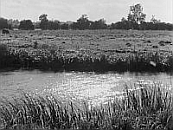
The
recording of Queen Mary's Garden, Regent's
Park is from the Chappell recorded music
library with Sidney
Torch conducting the Queen's Hall Light
Orchestra (London, 1940s?).
This
interlude can be watched on the BBC ARCHIVE. Queen
Mary's Garden, Regent's Park is at 2:51.
|
Roses
of Picardy (1916)
in Roses
of Picardy
Triangle Film Corporation (USA, 1918)
in Roses
of Picardy
directed by Maurice Elvey (UK, 1927)
in Camera
Interviews: Mr F. E. Weatherly, KC, the
Famous Song Writer
Pathé Pictorial (UK, 1928)
in Strong
and Willing
Vitaphone Corporation (USA, 1930)
in Rudy
Starita and His New ‘Octarimba’
in Melodies of Long Ago
Pathé Pictorial (UK, 1936)
in A
Friend Indeed
American Red Cross (USA, 1941)
in Forever
and a Day
directed by Edmund Goulding, and others (USA,
1942)
in Variety
Jubilee
directed by Maclean Rogers (UK, 1943)
in This
Happy Breed
directed by David Lean (UK, 1944)
in I
Live in Grosvenor Square
aka A Yank in London
directed by Herbert Wilcox (UK, 1945)
in Devil
in the Flesh (Le Diable au
corps)
directed by Claude Autant-Lara (France, 1946)
in The
Courtneys of Curzon Street
aka Kathy's Love Affair
directed by Herbert Wilcox (UK, 1947)
in The
Good Old Days
produced
by Barney Colehan (UK, 1959)
in Bandstand
with B. H.
directed
by Warwick Freeman (Australia, 1961)
in Coronation
Street
directed by Christopher McMaster (UK, 1962)
in The Great War: Hell Cannot
Be So Terrible
British Broadcasting Corporation (UK 1964)
in World War Ⅰ: Tipperary and
All That Jazz
Columbia Broadcasting System (USA, 1964)
in Kiss
Me, Stupid
directed by Billy Wilder (USA, 1964)
in It's
the Great Pumpkin, Charlie Brown
directed by Bill Melendez (USA, 1966)
in [Picardie
Actualités :]
Il y a cinquante ans… Doullens
26 mars 1918, le commandement
unique
[Picardy News: Fifty Years
Ago… Doullens 26 March 1918, The Sole Command]
Office de radiodiffusion télévision française
(France, 1968)
in Oh!
What a Lovely War
directed by Richard Attenborough (UK, 1968)
in Those
Daring Young Men in Their Jaunty Jalopies aka Monte Carlo or
Bust!
directed by Ken Annakin (Italy, France, UK,
1968)
in Solveigin
laulu [Solveig's Song]
directed by Reima Kekäläinen (Finland, 1973)
in Upstairs
Downstairs: Peace out of Pain
directed by Christopher Hodson (UK, 1974)
in When
the Boat Comes In: A Land Fit for Heroes and
Idiots
directed by Ronald Wilson (UK, 1975)
in Aces
High
directed by Jack Gold (UK, 1975)
in All
You Need Is Love, The Story of Popular
Music: Jungle Music, Jazz
directed by Tony Palmer (UK, 1976)
in The
Good Old Days
devised and
produced by Barney Colehan (UK, 1976)
in Vera
Lynn Sings
directed by Keith Beckett (UK, 1977)
in A
Christmas to Remember
directed by George Englund (USA, 1978)
in The
Dick Cavett Show: [Oscar Peterson]
directed by Richard Romagnola (USA, 1979)
in MASH:
Old Soldiers
directed by Charles S. Dubin (USA, 1979)
in Montand
d'hier et d'aujourd'hui [Montand
of Yesterday and Today]
directed by Jean-Christophe Averty (France,
1980)
in The
Good Old Days
produced by
Barney Colehan (UK, 1980)
in Cream
in My Coffee
written by Dennis Potter and directed by Gavin
Millar (UK, 1980)
in Montand
81
directed by Guy Seligmann (France, 1981)
in Raymond
Siozade: Roses de Picardie de Wood HAYDN
[sic]
Télévision française 1 (France, 1981)
in Eureka
directed by Nicolas Roeg (UK, 1982)
in One
Deadly Summer (L'Été meurtrier)
directed by Jean Becker (France, 1982)
in Montand
international
directed by Guy Job (France, 1983)
in The
Indomitable Teddy Roosevelt
directed by Harrison Engle (USA, 1983)
in A
Passage to India
directed by David Lean (UK, 1984)
in Le
Téléphone, un pont entre nous [The
Telephone, a Bridge Between Us]
Ministère des P.T.T. (France, 1984)
in Trous de
mémoire [Lapses of Memory]
directed by Paul Vecchiali (France, 1984)
in He
Died with His Eyes Open (On ne
meurt que deux fois)
directed by Jacques Deray (France, 1985)
in A
Month in the Country
directed by Pat O'Connor (UK, 1986)
in The
Whales of August
directed by Lindsay Anderson (USA, 1986)
in Cause
célèbre
directed by John Gorrie (UK, 1987)
in Chasing
Rainbows
directed by William Fruet (Canada, 1987)
in Montand
de tous les temps [Montand of all
time]
directed by Marie-Sophie Dubus and Frédéric
Rossif (France, 1987)
in Another
Woman
directed by Woody Allen (USA, 1988)
in World War
I Songs: Featuring the RMSM Junior Choir
The Bands of HM Royal Marines (UK, 1988)
in Yves
Montand`i laulud [Yves Montand's
Songs]
Eesti Televisioon (Estonia, 1990)
in The
House of Eliott
directed by Graeme Harper (UK, 1992)
in [Keepsake:
Roses of Picardy]
Barbershop Harmony Society (USA, 1993)
in Performance:
Message for Posterity
written by Dennis Potter and directed by David
Jones (UK, 1994)
in Johnny
and the Dead
directed by Gerald Fox (UK, 1994)
in Black Holes
(I buchi neri)
directed by Pappi Corsicato (Italy, 1995)
in [West
By Northwest: Roses of Picardy]
Barbershop Harmony Society (USA, 1995)
in Roses
of Picardy
directed by Steven Mochrie (UK, 1998)
in Great
Battles of the Great War: Here Comes
Kitchener's Army
directed by Ed Skelding (UK, 1999)
in Léargas:
Ná Lig Sinn i nDearmad... [Léargas:
Lest We Be Forgotten...]
directed by Pat Butler (Ireland, 2003)
in Ladies
in Lavender
directed by Charles Dance (UK, 2003)
in A
Little Light Music: Friday Night Is Music
Night
directed by Ian Russell (UK, 2005)
in La Nuit des
talents [Talent Awards Night]
Conseil général de la Somme (France, 2006)
in Lilies:
The Sea
directed by Roger Goldby (UK, 2006)
in Downton
Abbey
directed by James Strong (UK, 2011)
in War
Horse
directed by Steven Spielberg (USA, 2011)
in Birdsong
directed by Philip Martin (UK, 2011)
in [Roses de Picardie par
Guylène Laur et Jean-Yves Duchesne]
directed
by Jean-Michel Legros aka Yendoful Tito
(France, 2011)
in Les Fils du vent
[Sons of the Wind]
directed by Bruno Le Jean (France)
in [The
Good Old Days: Roses of Picardy]
Barbershop Harmony Society (USA, 2012)
in Before
the Winter Chill (Avant l'hiver)
directed by Philippe Claudel (France,
Luxembourg, 2012)
in [Legacy:
Roses of Picardy]
Barbershop Harmony Society (USA, 2013)
in An
Accidental Soldier
directed by Rachel Ward (Australia, 2013)
in Jeff
and Joel's House Party: [Roses
of Picardy]
Jeff and Joel's House Party (USA, 2013)
in
Roses
of Picardy (Song),
Haydn Wood & Fred. E.
Weatherly
Patricia
Hammond and Matt Redman (UK, 2014)
in [Dansons la
rose [Let's Dance the
Rose]]
Michel Debray (France, 2014-2022)
in The
Danish Girl
directed by Tom Hooper (UK, 2015)
in Art
Abscon, Secret Show in Athens, Travelling
with Ukulele: Roses
of Picardy
Art Abscon (Greece, 2015)
in The
People Remember: Courage and Sacrifice
directed by Tim Fransham (UK, 2015)
in Louise
by the Shore (Louise en hiver)
directed by Jean-François Laguionie (France,
2015)
in Cézanne
et moi
directed
by Danièle Thompson (France, 2015)
in [Roses
de Picardie]
Michel
Debray (France, 2016)
in Old School Jazz Club: [Dansons
la rose] [Let's Dance the Rose]]
directed by Lucas Romero (Brazil, 2016)
in Jazz
Pirates: Roses
of Picardy
Jazz
Pirates (Sweden, 2016)
in Somme
and Beyond
Mersey
Wave Music (UK, 2016)
in Glen
Arven Avenue: Roses of Picardy
Barbershop Harmony Society (USA, 2016)
in [Canchons pi liries in
picard]
Agence régionale de la langue picarde (France,
2016)
in Wonder
Wheel
directed by Woody Allen (USA, 2017)
in Songs of
the Great War
National
Trust of Guernsey (UK, 2017)
in Haydn
Wood: Roses
of Picardy,
Arrangement by H. M. Higgs
Phillip
Sear (UK, 2017)
in [An evening of song,
reminiscence & nourishment!:
Roses of Picardy - Haydn Wood (Patricia
Hammond, Matt Redman)]
OPEN Ealing (UK, 2017)
in Gunhild Carling
Live:
[Roses of Picardy]
Gunhild Carling (Sweden, 2017)
in Gerald
Finley & Julius Drake
Library of Congress Music Division (USA, 2018)
in [Pacific Ring:
Roses of Picardy]
Barbershop Harmony Society (USA, 2018)
in Pilgrimage:
The Road to Rome
directed by Mark O'Brien, Deborah Lovett, and
Lizzie Toms (UK, 2018)
in BBC
Proms: Last Night of the Proms
directed by Helen Mansfield (UK, 2018)
in Rick Stein's Secret France
Denham Productions (UK, 2018)
in Générations
France Musique, le live: Haydn Wood,
Roses of Picardy
Radio France (France, 2018)
in The
Royal British Legion Festival of Remembrance
directed by Bridget Caldwell (UK, 2018)
in [Anthony León, Tenor:
Roses of Picardy]
La Sierra University
Department of Music (USA, 2018)
in Roses
de Picardie
(France, 2019)
in An
die Musik, To Music: Roses of
Picardy
Palm Beach Opera (USA, 2020)
in [Living
Room Requests: From
Deep Purple to Black Velvet Band and Polish
Tango]
Patricia Hammond and Matt Redman (UK, 2020)
in Roses
of Picardy
as Sung by Adam LeFebvre
Adam LeFebvre (USA, 2020)
in An
Aria a Day: Clarissa Foulcher, Roses
of Picardy
Opera Queensland (Australia, 2020)
in Falling
Stars
directed by Michael Strassen (UK, 2020)
in Roses of
Picardy
Flo Bonner (UK, 2020)
in All
About Yves Montand (Montand est
à nous)
directed by Yves Jeuland (France, 2021)
in Roses of
Picardy
The Fiddle Channel (UK, 2022)
in Roses
of Picardy
videoed by Sam Gee (UK, 2022)
in Roses of Picardy (1916),
Haydn Wood (arr. Stephen Hough)
Chamber Music Society of Palm
Beach (USA, 2022)
in [Roses of
Piccardy[sic] (Haydn Wood),
by Søvilla JazzBand at
Axelborg Bodega]
videoed by MoLahBel (Denmark,
2023)
in Queer
directed by Luca
Guadagnimo (Italy, USA,
2024)
in [MaroSwing
4tet - Les
Roses de Picardie
de Haydn Wood
version de Django
Reinhardt]
MaroSwing
(France, 2024)
|
Roving Fancies (1942)
in Carrying the Load:
British Railways at War
London, Midland and Scottish Railway Company
(UK, 1945)
documentary
This documentary is about the vital
role played by the railways of Britain during
World War Ⅱ, especially for the conveyance of
troops and equipment.
‘And then came action. Actions swift
and terrible that swept through Denmark, Norway,
Holland, Belgium and France. Until finally
Dunkirk, a miracle marking the end of a disaster.
From the beaches, the loaded boats came to
Britain.’
‘From the ports, trains took the
battle-weary men to the dispersal [units] … At the
shortest possible notice, special trains were
hurriedly assembled, and in the space of eight
days, 620 specials were run from seven ports in
the South-East of England.’
An excerpt from Roving Fancies
accompanies this moment in the film.
The recording by the Regent Classic
Orchestra is from the Bosworth recorded music
library (1943?).
The documentary can be watched on YouTube. Roving Fancies
is at 7:22.
|
Sadler's Wells (At the
Ballet) (1948)
from Snapshots of London, Suite
in Hospitals for All
directed by Hamilton Tait (UK, 1948)
government sponsored film
Produced for the Department of
Health for Scotland, this film shows some of the
many facilities available in
Scotland's hospitals, all part of the
newly founded National Health Service.
Sadler's Wells accompanies
the opening credits and the beginning of the
film's first shot.
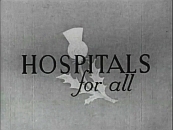
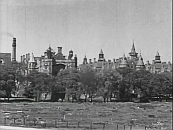
The
recording of Sadler's Wells is from the
Chappell recorded music library with Sidney
Torch conducting the
Queen's Hall Light Orchestra (London,
1948).
The film
can be watched on YouTube.
Sadler's
Wells (At the Ballet)
in
Interlude: [Potter's Wheel]
British Broadcasting Corporation (UK, 1953)
interlude
Potter's
Wheel shows the hands of a potter (Georges
Aubertin) shaping the same piece of clay over
and over again. His process is accompanied first
by Charles Williams's The Young Ballerina,
then by Haydn Wood's Sadler's Wells.
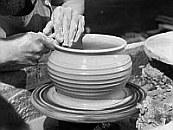
The
recording of Sadler's Wells is from the
Chappell recorded music library with Sidney
Torch conducting the
Queen's Hall Light Orchestra (London,
1948).
This
interlude can be watched on the BBC ARCHIVE. Sadler's
Wells is at 2:30.
|
The Seafarer, A Nautical
Rhapsody (on Halliard, Capstan and Hauling
Shanties)
(1942)
in Come With Me:
Swansea
produced by Norman Cobb (UK, 1951)
travelogue
The well-known broadcaster Richard
Dimbleby visits places and meets with locals in
Swansea.
He gives a commentary on the
unloading of fish at the port, and then asks his
colleague Wynford Vaughan Thomas to describe the
people of Swansea.
The first three shanties of The
Seafarer (‘Hullabaloo Balay,’ ‘Rio Grande,’
and ‘Leave Her Johnnie, Leave Her’) accompany a
part of the sequence about the unloading of fish
and the following meeting with W. V. Thomas.
The recording is by Charles Williams
and His Concert Orchestra (UK, 31 October 1951).
Haydn Wood's The Horse Guards, Whitehall:
March and Torch of Freedom
accompany other moments in the
travelogue.
Come With Me: Swansea can be
watched on the British Film Institute
website. The Seafarer is at 12:38.
|
Sketch of a Dandy (1952)
in Fifties British War
Films: Days of Glory
directed by Hans Petch (UK, 2012)
television documentary
In the 1950s, Britain looked back on
its epic World War Ⅱ effort in films such as The Dam Busters,
The Cruel Sea,
and The Colditz
Story. However, even at the time these
productions were criticised for being class-bound
and living in the past.
The journalist
and historian Simon Heffer argues that these films
have real cinematic merit and a genuine cultural
importance, that they tell us something
significant not only about the 1950s Britain from
which they emerged, but also about what it means
to be British today.
Heffer swiftly mentions a
whimsical comedy (The Titfield Thunderbolt,
with brief shots of its making) made by Ealing
Studios the same year they made The Cruel Sea.
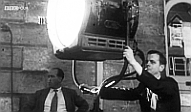 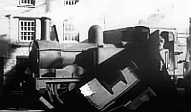 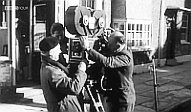
The
conclusion—with
much editing—of Sketch of a
Dandy is the background music to this short
sequence.
The
recording is by the
Czecho-Slovak Radio Symphony Orchestra, conducted
by Adrian Leaper (Bratislava, Slovakia, March
1991).
Haydn Wood's The Horse Guards, Whitehall:
March accompanies other moments in the
documentary.
This documentary can be watched on DAILYMOTION. Sketch of a
Dandy is at 8:10.
|
Slave Dance (1929)
from Egypta, An Egyptian Suite
in Rich and Strange aka
East of Shanghai
directed by Alfred Hitchcock (UK, 1931)
A young English couple, Fred and
Emily Hill, receive a big inheritance and decide
to realize all their dreams. They leave for a
cruise to the Far East behaving as rich people.
Paris is the first stop and the Folies Bergère are
not to be missed. In the sheer and low cut gown
that she wears for the first time, Emily feels as
naked as the chorus girls on stage actually are.
However, a prudish Hitchcock
delivers a chaste and abridged reconstruction of a
Folies Bergère show. One of the numbers is danced
by
exotic female warriors armed with lances and
shields, to
a few bars of Slave Dance played by an
orchestra.
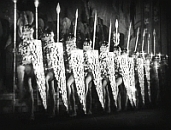
Rich
and Strange can be watched on INTERNET ARCHIVE. Slave
Dance is at 11:27.
Slave Dance
in Phillip Sear
plays…: Haydn Wood, Slave Dance
Phillip Sear (UK, 2021)
videoed performance
On 10 November 2021, the English
pianist Phillip Sear from Haywards Heath, West
Sussex, recorded a
home video of himself sight-reading Slave
Dance for solo piano.
|
Torch of Freedom (Grand
March) (1941)
in Coal Mining Today
Ministry of Information (UK, 1946)
government sponsored film
The film was produced for the
Ministry of Fuel and Power and the Ministry of
Labour and National Service.
‘In the past abundant coal and the
men to mind it, made it possible for Britain to
become the world's first manufacturing nation …
Today recovery from war and our future prosperity
again depend on coal and the men who get it … Its
main use is still the production of power and heat
… Chemists can now extract all manner of new
substances.’ Soap, nylon, saccharin, flavouring
for sweets, aspirin, life-saving drugs, synthetic
fertilizers, insecticides, plastics. ‘Our
country's future largely depends on how much coal
can be won from underground.’
The core of the film is the training
of miners at the Mines Training Mechanisation
Centre in Sheffield.
And the film concludes: ‘Today coal
mining is at the beginning of a great change … The
miner of tomorrow will
be an engineer too, combining mechanical
knowledge with the ability to triumph over the
difficulties and hardships of working underground.
This job will always be dirty, but he will be able
to go home bathed and in clean clothes. And he
will have the satisfaction of having mastered a
hard job as well as the knowledge that his day's
work has helped to produce something that the
country really needs.’
Torch of Freedom for
orchestra is the background music to the opening
credits, most of the first sequence, and all of
the last sequence.
References are not known for this
recording of Torch of Freedom.
The film can be watched on vimeo.
Torch of Freedom is at 0:00 and 16:03.
Torch of Freedom (Grand March)
in Come With Me:
Swansea
produced by Norman Cobb (UK, 1951)
travelogue
The well-known broadcaster Richard
Dimbleby visits places and meets with locals in
Swansea.
Among them is Mrs Stewart, an ex air
raid warden, who answers his questions about the
buildings which were damaged, and which were not,
in the Blitz in February 1941.
Torch of Freedom accompanies
the sequence.
The recording is from the Boosey
& Hawkes mood music library with Jack Leon
conducting the New Concert Orchestra (UK, 1950?).
Haydn Wood's The Horse Guards, Whitehall:
March and The Seafarer accompany
other moments in the
travelogue.
Come With Me: Swansea can be
watched on the British Film Institute
website. Torch of Freedom is at 7:58.
|
Tower Hill (1946)
from London Landmarks, Suite
in Castle Sinister
directed by Oscar Burn (UK, 1947)
During the war, an army intelligence
officer travels to Glenye Castle in Scotland to
investigate the death of an officer and the
disappearance of another, both attributed to the
castle's mysterious phantom but actually the work
of an enemy agent.
Nigel who was the enemy agent's
accomplice and impersonated the phantom, has just
been shot by the enemy agent; he dies in his
half-brother's arms. And here comes the local
constabulary who is conducting his own
investigation into the mysterious phantom's
crimes.
An excerpt from Tower Hill
is the background music to this moment in the
film.
The recording is from the Chappell
recorded music library with Charles Williams
conducting the Queen's Hall Light Orchestra (UK,
1946?).
Castle Sinister can be
watched on VK Video. Tower Hill
is at 40:14.
|
 Two Little Pieces for Violin (1911) Two Little Pieces for Violin (1911)
1. Slumber Song
2. Elfin Dance
in Olivia Crowhurst
Plays Haydn Wood's Two Little Pieces for
Violin
after a video by St Andrew's Presbyterian
Victoria (Canada, 2025)
videoed performance
In a recital given on 6 December
2025 at St Andrew's Presbyterian Church, Victoria,
British Columbia, by the violin students of Ann
Elliott-Goldschmid at the University of Victoria
School of Music, Olivia Crowhurst performed Two
Little Pieces, accompanied by Jany Lu on
piano.
Crowhurst first told the audience
that Haydn Wood ‘was a relatively unknown
composer, but we like to share his music around,
and, yeah, play more of it.’ And she introduced
the two pieces: ‘Slumber Song. It's a very
docile, very sleepy piece, with perhaps a hint of
tension. And then, I'm going to pick up the pace,
with a piece called Elfin Dance, which is
a very sprightly little piece.’
Nowadays, Haydn Wood is ‘a
relatively unknown composer,’ but he was a
renowned composer in his time.
The video can be watched on the Haydn Wood Music channel
on YouTube. Slumber Song is at 0:52, and
Elfin Dance is at
3:20.
St Andrew's Presbyterian Victoria's video of the
complete recital can be watched on YouTube. Crowhurst's
performance is at
1:09:40.
|
The Unforgotten Melody
for piano (1934)
in Phillip Sear plays…:
Haydn Wood, The Unforgotten Melody
Phillip Sear (UK, 2021)
videoed performance
On 12 October 2021, the English
pianist Phillip Sear from Haywards Heath, West
Sussex, recorded a
home video of himself sight-reading The
Unforgotten Melody for solo piano.
|
Vienna, 1913 (1936)
from Frescoes, Suite
in Oh, Boy!
directed by Albert de Courville (UK, 1937)
June Messanger is a model in a
London department store. Her boss is one of her
lovers.
She is the principal in a fashion
show which her other lover also attends.
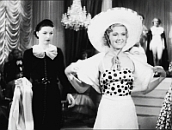
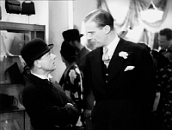
Vienna, 1913 for
orchestra is a waltz, an excerpt of which
accompanies the show and the rivals' unfriendly
encounter.
Vienna, 1913
in A Midsummer Nightmare
John Halas (UK, 1957)
cartoon
What would Puck, ‘that merry
wanderer of the night,’ make of the modern era?
This animated short pitches Shakespeare’s
‘shrewd and knavish sprite’ against a
contemporary folly—the television which even
broadcasts concerts.
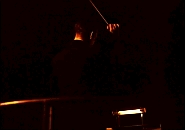 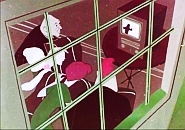 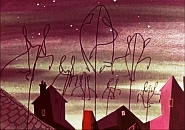 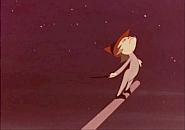
Vienna,
1913 is performed in the broadcast
concert. The television aerials waltz to it.
The
recording is from the Boosey & Hawkes mood
music library with Serge Krish conducting the New Concert
Orchestra (London, 1946?).
A
Midsummer Nightmare (dubbed in German)
can be watched on the British Film Institute
website. Vienna, 1913 is at 6:39.
|
Virginia, A Southern
Rhapsody (1927)
in Mästarnas Match
[Championship Fight] aka Ingo vs. Floyd
directed by Per Gunvall (Sweden, 1959)
documentary
Ingemar Johansson (Sweden) versus
Floyd Patterson (USA): the World Heavyweight
Boxing Championship took place in New York City on
25 June 1959.
Over the last few days before the
match, Per Gunvall filmed each of the two
opponents and their entourage. An excerpt from
Virginia is the background music for the
sequence about Patterson. Sometimes
pastoral—Patterson was training in a rural
area—sometimes ‘athletic,’ the music excerpt is repeated as a
loop a couple of times.

The recording is from the Chappell
recorded music library with Charles Williams
conducting the Queen's Hall Light Orchestra
(London, 1942).
|
When the Daisy Opes Her
Eyes, Valse (1911)
in Metro-land
written by John Betjeman and produced by Edward
Mirzoeff (UK, 1972)
television documentary
John Betjeman's meditation on the
London suburbs served by the Metropolitan Line
takes him to the Chiltern Court restaurant which
was built above Baker Street station circa 1913.
Customers, before they took the train for home,
could listen to a band playing for the thé
dansant. Betjeman seems to hear the band
playing When the Daisy Opes Her Eyes.

The music continues with 1910
footage of Baker Street station followed by a shot
of the disused Marlborough Road station.
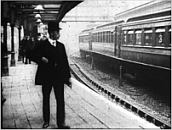
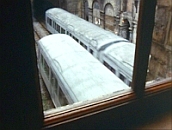
When the Daisy Opes Her Eyes
is played by Albert Sandler and his orchestra
(London, 1 February 1940).
The documentary can be watched on dailymotion. When the
Daisy Opes Her Eyes is at 4:11.
|
 When the Home-Bells Ring Again
for piano (1942) When the Home-Bells Ring Again
for piano (1942)
in Phillip Sear plays…:
Haydn Wood, When the Home-Bells Ring
Again
Phillip Sear (UK, 2025)
videoed performance
On 9 December 2025, the English
pianist Phillip Sear from Haywards Heath, West
Sussex, recorded a home video of himself
sight-reading Wood's transcription for piano of
his song When the Home-Bells Ring Again.
He has also recorded in the same way
Consolation,
Dawn in the
Valley of the Kings, The Doctor, Dreaming, The
Laughing Cavalier, Roses of Picardy, Slave Dance, and The Unforgotten Melody.
Phillip Sear uploaded the video to YouTube.
|
With a Smile and a Song
(1935)
in Music Hall
directed by John Baxter (UK, 1934)
The Workhampton Empire, an ailing
music hall, was closed for alterations. For the
grand re-opening night, ‘stupendous attractions’
are announced, ‘the music hall's reply to the
depression. New stars, new ideas, new
everything.’
The show is about to begin; one can
hear from the foyer the orchestra playing With
a Smile and a Song.
The finale—With a Smile and a
Song—is sung by
‘Raymond
Newell and Entire Chorus with Debroy Somers' Band
in a Grand Ensemble.’
‘So
wherever you go,
Show your friend and your foe
That a blow here and there cannot beat you.
With a smile on your lips,
Carry a song in your heart,
Showing the world just what a song can do.’
And a few bars of With
a Smile and a Song played by the orchestra
accompany the closing title.
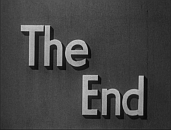
With a Smile and a Song is
a march. The lyrics by Bruce Sievier were set to
music by Haydn Wood especially for the film.
Months later, the song was published with
re-tailored lyrics by Ascherberg, Hopwood &
Crew. It is
not known who orchestrated the song:
Haydn Wood, Debroy Somers, or the film's musical
director William E. Trytel.
Raymond Newell was a popular
English baritone, and Debroy Somers was a big
band leader. With several other artists, they
were cast in the film to perform at the
fictional Workhampton Empire for its
re-opening night.
Some months later, Haydn Wood
composed the music of another John Baxter's
film, The
Small Man.
|
Who Cares? (1929)
from Dear Love
in These Foolish Things
directed by Julia Taylor-Stanley (UK, 2005)
London in 1938: Diana is a young
actress who seeks to follow in her famous mother's
footsteps. She meets Robin, a struggling
playwright.
Who Cares? accompanies an
uninterrupted series of short scenes:
Douglas, an actor of some success,
tries a new tailor-made suit; he is joined by a
friend who is an entertainment columnist.
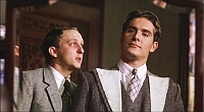
Robin introduces Diana to his
landlady, a retired showgirl who is delighted to
have Diana as a new tenant.
Diana smiles to the landlady and to Robin.
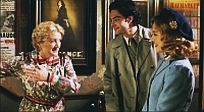 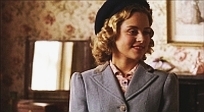
Robin at his typewriter.
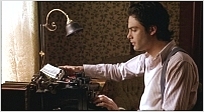
Diana and Dolly have fun in a
park—they had met at a drama school.
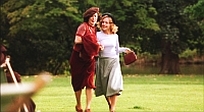
Robin on his bed counts what is left
of his bank notes.
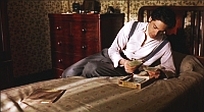
Diana looks for a bread and butter
job in the small ads.
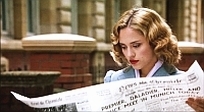
Diana and Dolly line up in a theater
agent's waiting room.
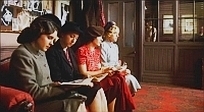
Who Cares? is played by
Jack Hylton and his orchestra, with Sam Browne
singing the chorus (London,
8 November 1929).
These
Foolish Things can be watched on
VK Video. Who
Cares? is at 8:54.
|
|
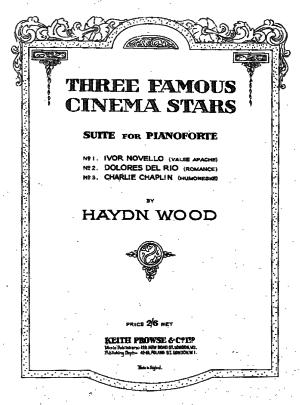
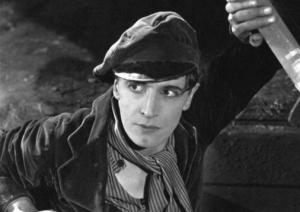
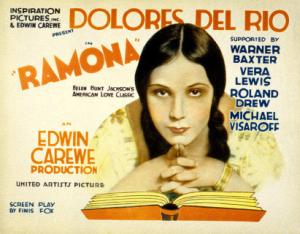
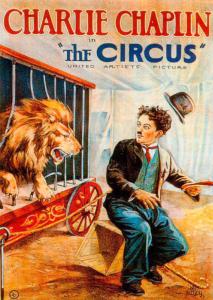
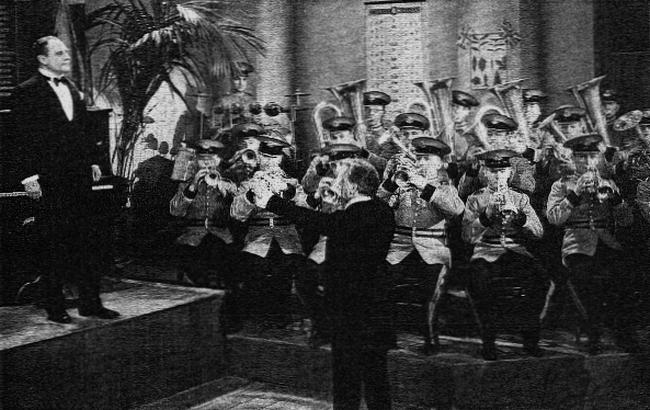
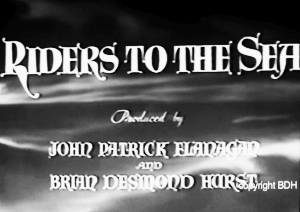
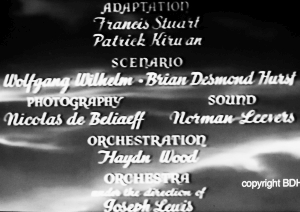
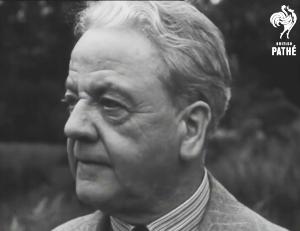
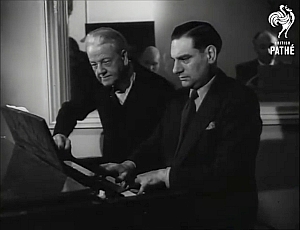
 A new addition to this web page.
A new addition to this web page.